Guide to Visiting Isalo National Park Madagascar
Isalo National Park is one of Madagascar’s most visited natural parks and is located in the country’s southwest. The climate here is dry so you can visit year-round without having to worry about huge downpours. The park itself is made up of a savannah and desert landscape with huge canyons and hidden oases. Visitors to Isalo will be rewarded with stunning panoramic views and some of Madagascar’s most iconic wildlife, the lemur.
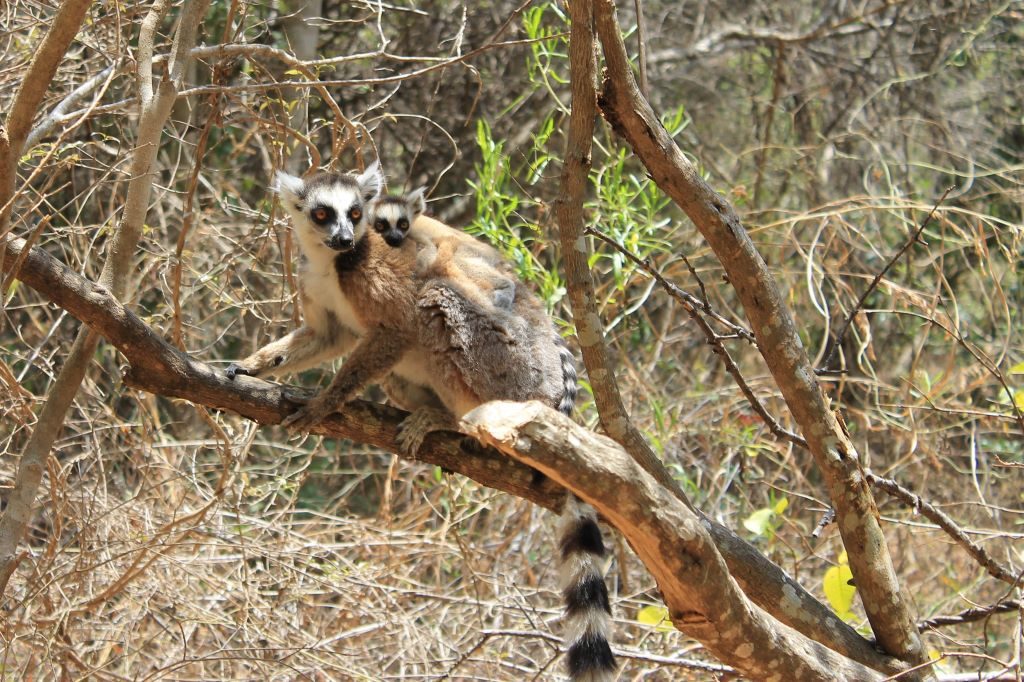
This post contains affiliate links, If you make a purchase through these links I will earn a commission at no extra cost to you. Thank you!
When you visit Isalo National Park, you will most likely get a chance to see the ring-tailed lemur. Arguably Madagascar’s most famous animal, some of the ring-tailed lemurs here are very used to people so you can see the troop up close. Madagascar has some of the highest biodiversity on the planet and hiking in the red and yellow landscape of Isalo National Park is a great way to experience some of that.
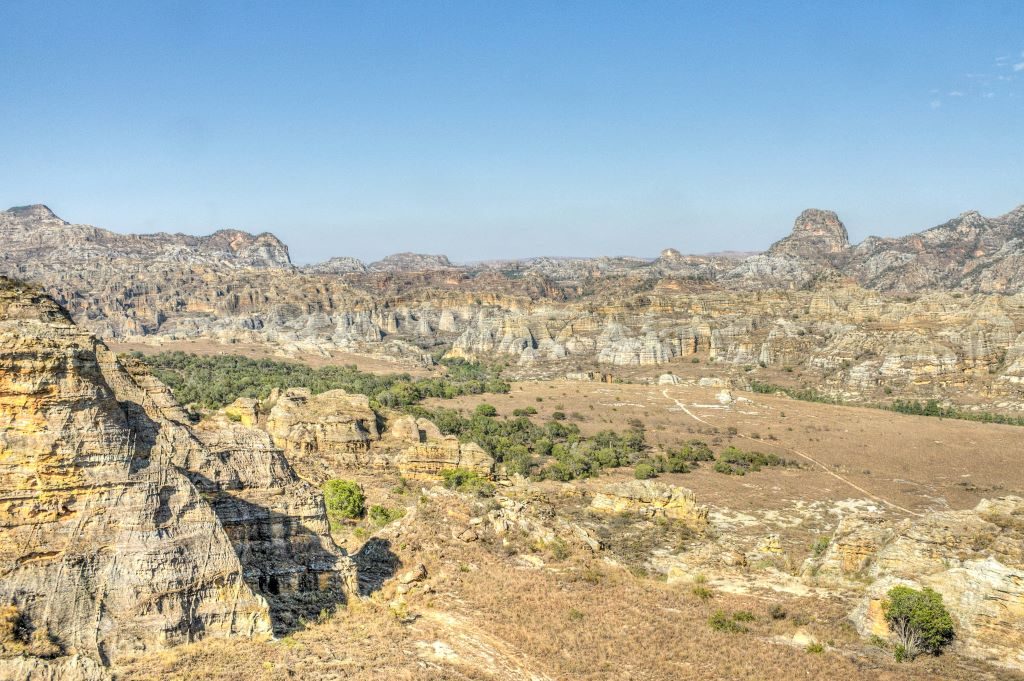
Organizing Your Trip to Isalo
How to Get to Isalo National Park
I rented a car and driver to get to Isalo. Isalo is often included in expeditions as well, like this two-week hiking tour. In my case, I planned this independently from a big excursion as I was already in the country. I drove from Ranomafana National Park and stopped near Anja Community Reserve staying in Ambalavao on the way. The drive back to Ranomafana from Ranohira took all day, I think maybe 9 or 10 hours.
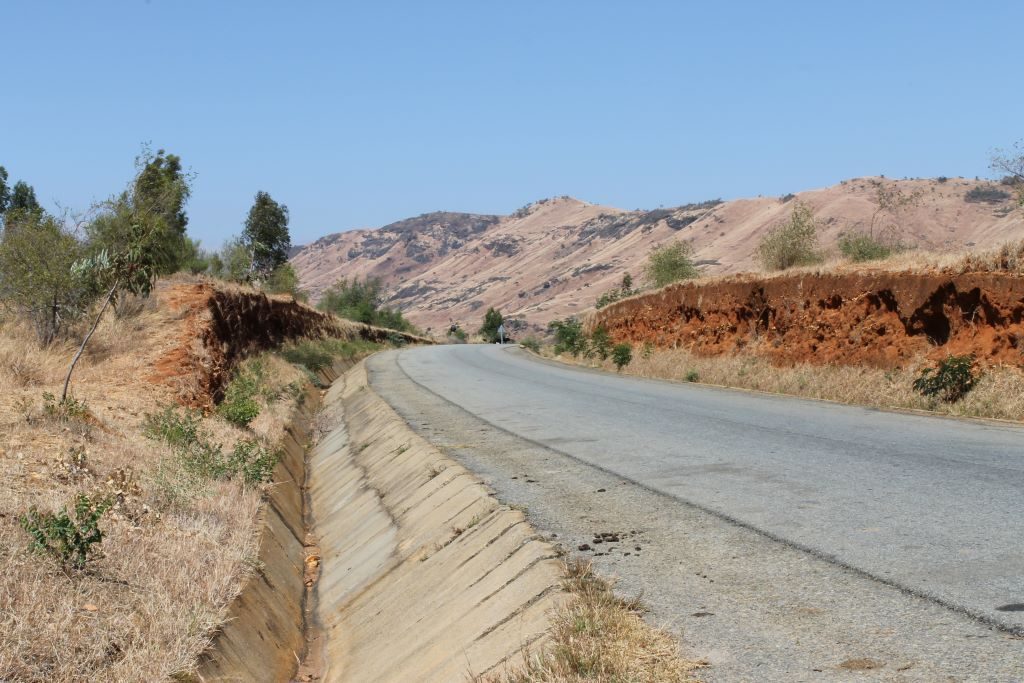
If you fly, you can fly into Toliara from Tana and rent a vehicle and be in Isalo in about 3 hours of driving.
There are also taxi-brousses that travel down the main highways and stop along the way if you are doing this on a budget. They are basically over-sized vans that are quite cramped but will get you around.
Where to Sleep in Ranohira
To hike the park you will have an early start so I highly recommend staying in Ranohira for two nights. The night before you hike and the night of. You can easily stay longer if you want to hike more in the park.
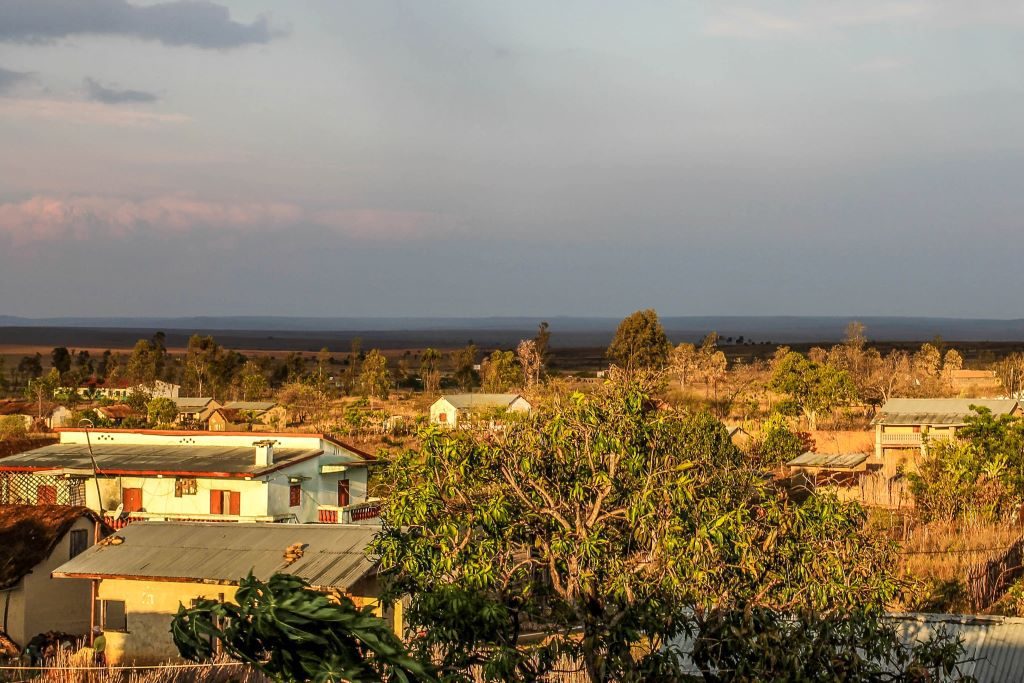
If you are spending a few days hiking in Isalo, you can hire porters and camp at one of the two campsites in the park which has basic facilities including a bbq area and rustic bathrooms.
Isalo Rock Lodge is where I would have stayed if I wasn’t traveling as a poor grad student. Located outside of the village, this place has a restaurant and outdoor pool. Gorgeous rooms and facilities and you can even rent bikes here.
Hotel H1 Isalo is located just outside of Ranohira and is a great price while also offering up a restaurant on site and basic but clean and bright rooms. A great budget-friendly choice.
Acquiring Lodging in Ranohira Anecdote
While Madagascar lodging is very affordable, I was travelling as a grad student so I was looking for as cheap as possible. This meant that I was willing to ask more expensive places for their cheapest room. I’m not saying it was the best experience. In fact, the place I stayed in Ranohira had the worst mattress possible I think. It was extremely cheap though. They put us in a completely separate section of the hotel, as in, another building, which they seemed to reserve for Malagasy visitors. They reluctantly let us eat in the restaurant there but they refused to sell us the kind of Fanta we wanted. It was the type of Fanta that they gave to the better-paying guests on arrival, for free. My money literally couldn’t buy this type of Fanta even though I could see it in their fridge.
Hiring a Guide in Isalo
I arrived in Ranohira after visiting Anja Community Reserve, the night before I planned on hiking. Ranohira is about a four-hour drive from Anja, it definitely looks closer on a map. Ranohira is a fairly small town but it is close to Isalo National Park and the park office. As Ranohira is a small town, there isn’t too much to do but some of the hotels here do have pools.
Hiking in Isalo National Park will give you a great experience with the local guides pointing out important features of the land as well as wildlife. As in all of Madagascar’s National Parks, it is required to hire a local guide to hike here. While this may be off-putting to some of the independent types, supporting locals and creating jobs by hiring guides just feels like responsible tourism in a place like Madagascar. I highly recommend booking your guide the night before hiking so you can leave early in the morning.
Guides will cost somewhere between 80,000-120,000 Ar depending on the route you choose. In addition, the park entrance is 65,000 Ar for a single day entry. If you are camping, porters cost 20,000 Ar a day.
Picking a Hiking Route
If you have a driver, they will help you book a guide at the National Park Office a guide for hiking the next day. When you book a guide there are different routes to choose from. My hiking partner and I just wanted to see as much as possible so we picked the longest route and let the guide show us around. I found the booking process quite confusing because it was all done in French, at the end we paid in advance at the National Park Office and just hoped for the best. Your driver will drive you to the trailhead the next morning along with your guide.

What to Pack for Hiking in Isalo
- A good hiking backpack
- Water, more than you think you will need, at least 2L
- Sunscreen
- Hat
- Bathing suit and lightweight towel
- Lightweight long sleeves in case the sun is too much
- Lunch. Can purchase in advance from hotel or book with your guide to have a fresh lunch at one of the campsites
- Camera
- Hiking shoes/boots
Hiking in Isalo National Park
I wasn’t sure what to expect at all coming to Isalo National Park as there are very few accounts online of visiting. I was pleasantly surprised. The day started off with meeting our guide, Peter, at 7 am. He was so knowledgable about the park I was glad that we had insisted on an English speaking guide. After spending time hiking Ranomafana National Parks rainforested slopes, I was looking forward to some flatter, drier ground.

History of the Bara People in the Park
The beginning of the hike took us up to the plateau area and towards the Piscine Naturelle, the first oasis. Along the way, Peter gave a great explanation about the burial practices of the Bara people, the locals in the area. The high cliffs here are used as a burial grounds for the local Bara people. Originally bodies are buried at a lower height on the cliff and then after a few years, the bones are removed and oiled with zebu fat and moved higher up the cliff face. Young boys get the job of climbing the cliffs to move the bones up higher. At the time of this, they also slaughter a zebu and there is a feast in the village.
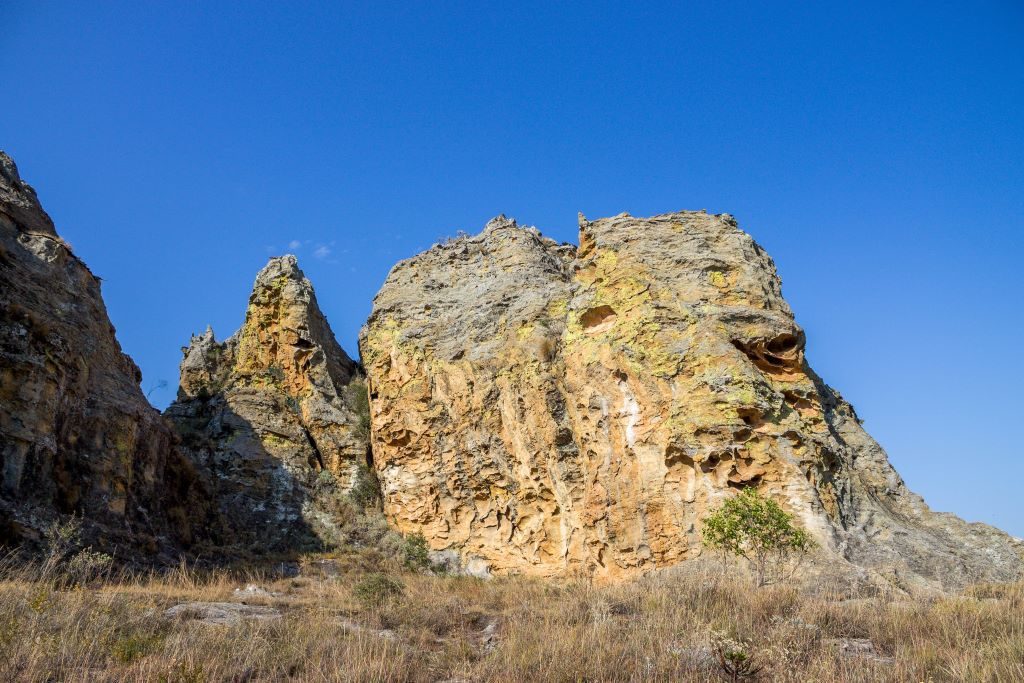
One of the more interesting facts I picked up here was that a boy isn’t part of the Bara people until about the age of 1-2 years old when he is circumcised. Females, on the other hand, are almost immediately part of the Bara people as it occurs when their ears are pierced. We learned all of this while hiking through the beautiful savannah landscape towards piscine naturelle.
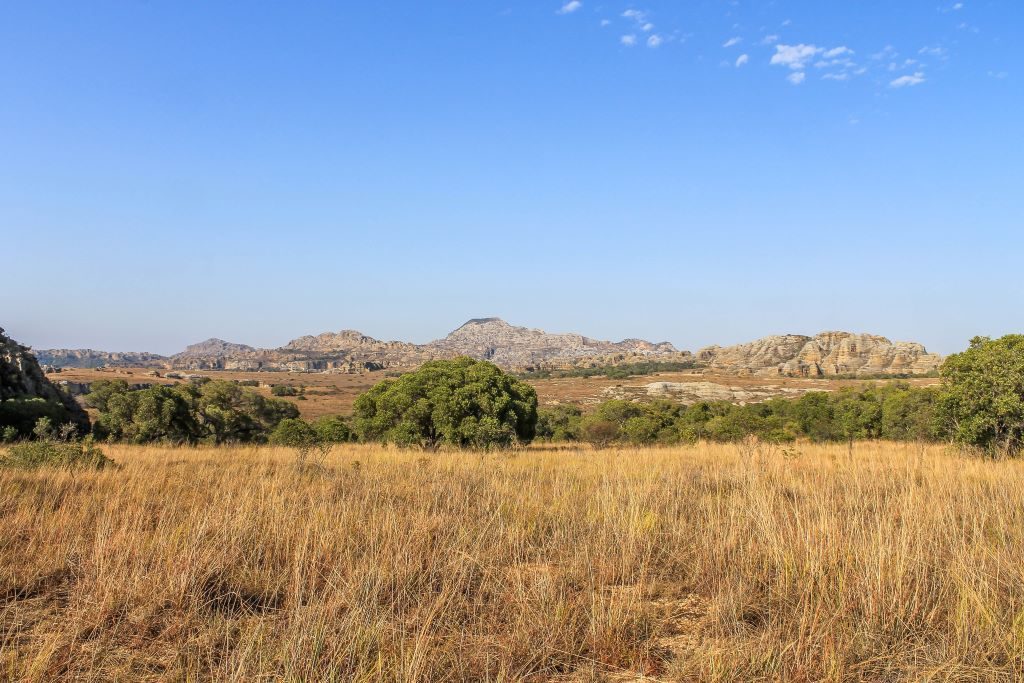
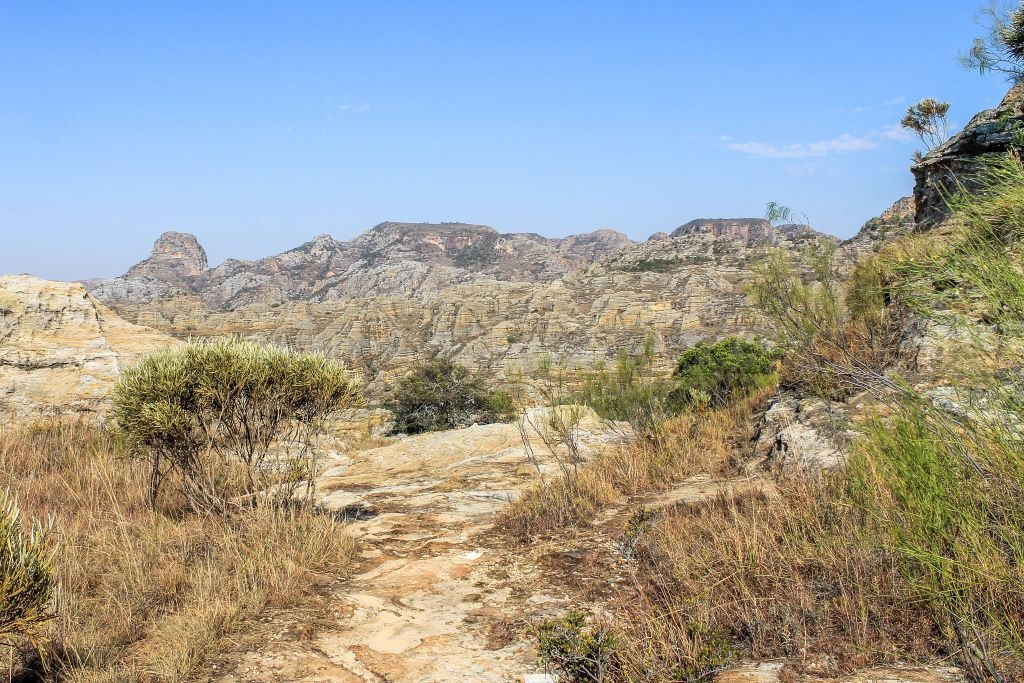
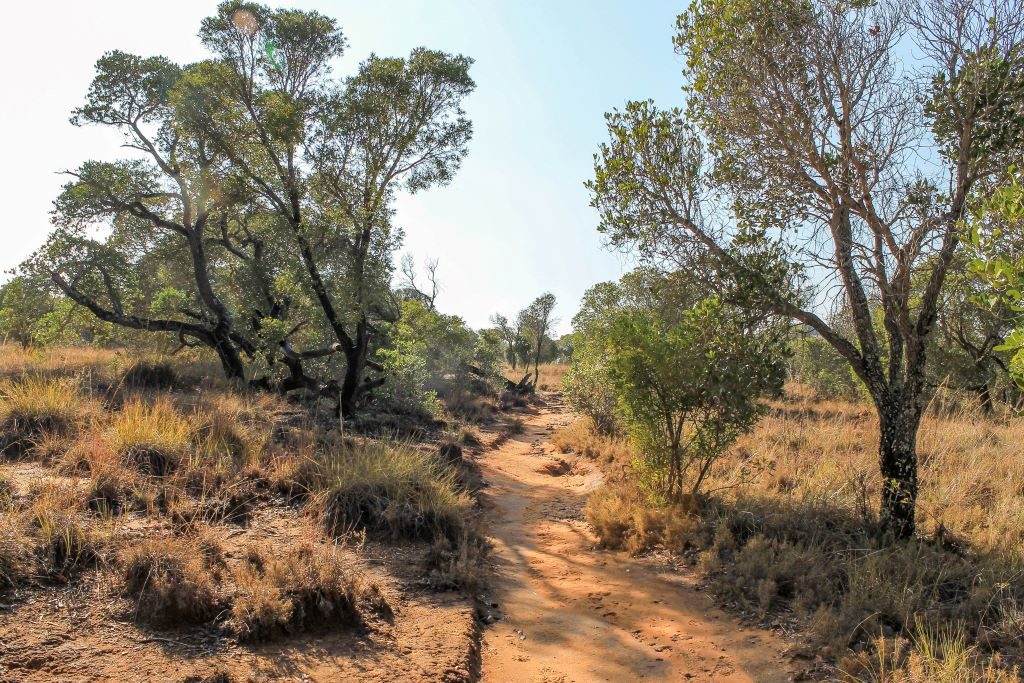
Piscine Naturelle and Crest Circuit
After a bit of a history lesson, we walked to the oasis. Before we got there, we were treated to views of the canyon.

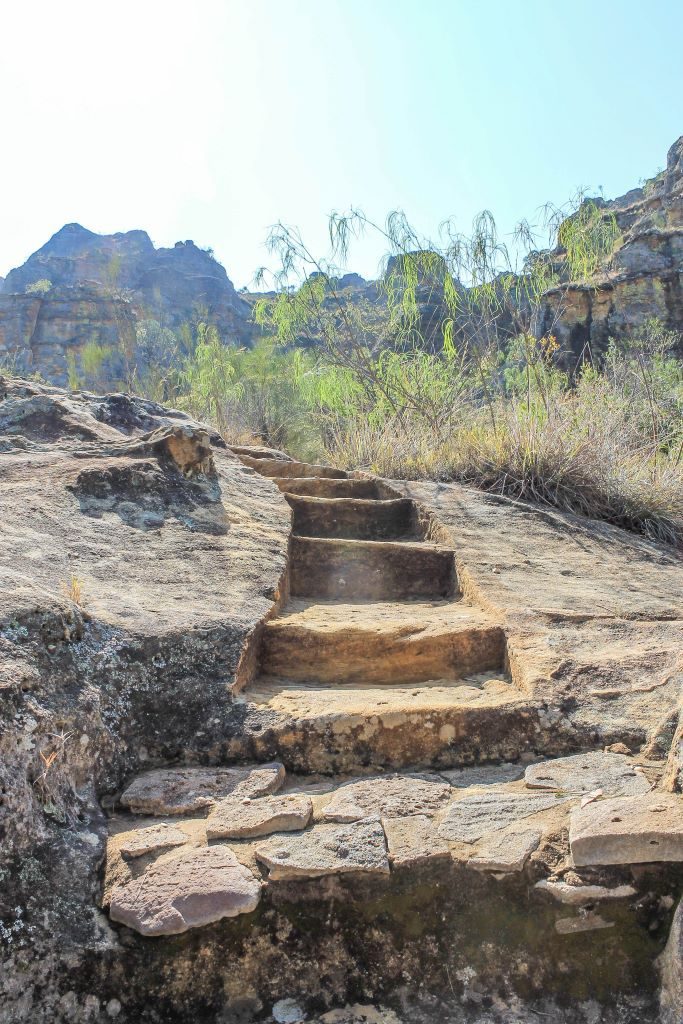
Everything looks very desert-like and then all of a sudden palm trees appear and you walk down into a beautiful natural pool and waterfall. The pool here is quite popular to swim in and as you will see, Isalo is quite hot. When I visited, the pool was full of sand so it wasn’t quite as vibrant as it can be. When there are heavy rains it becomes quite murky.
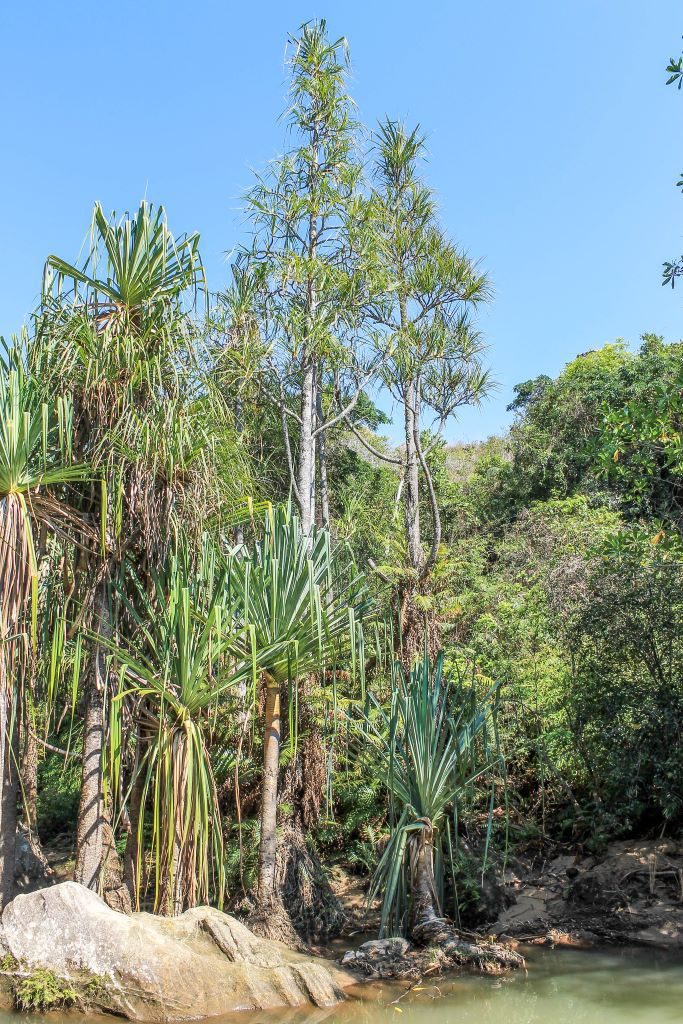
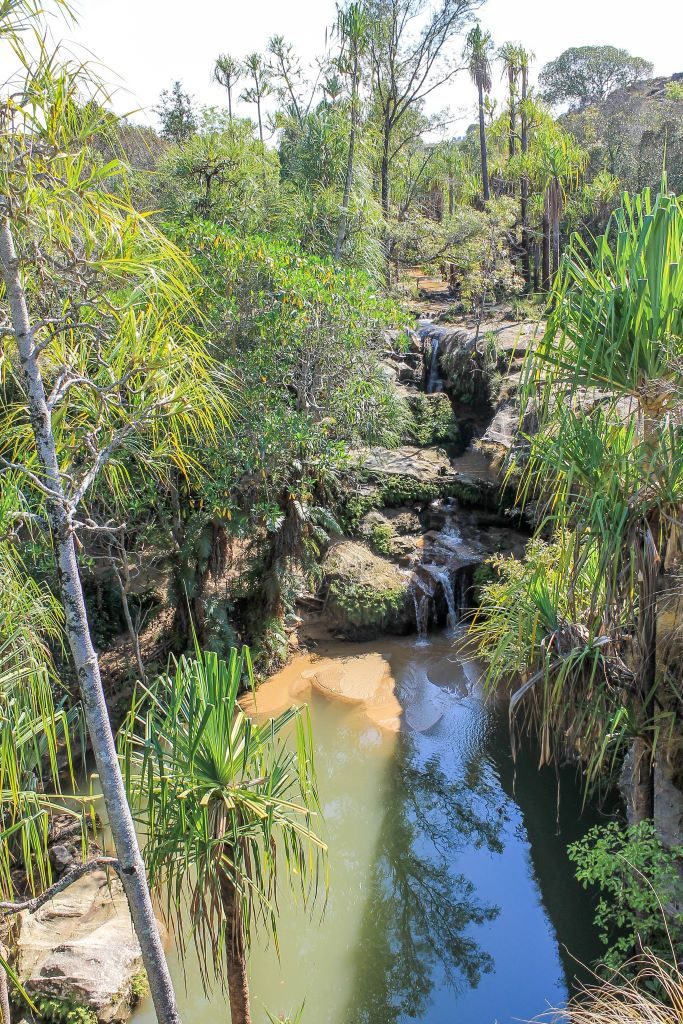
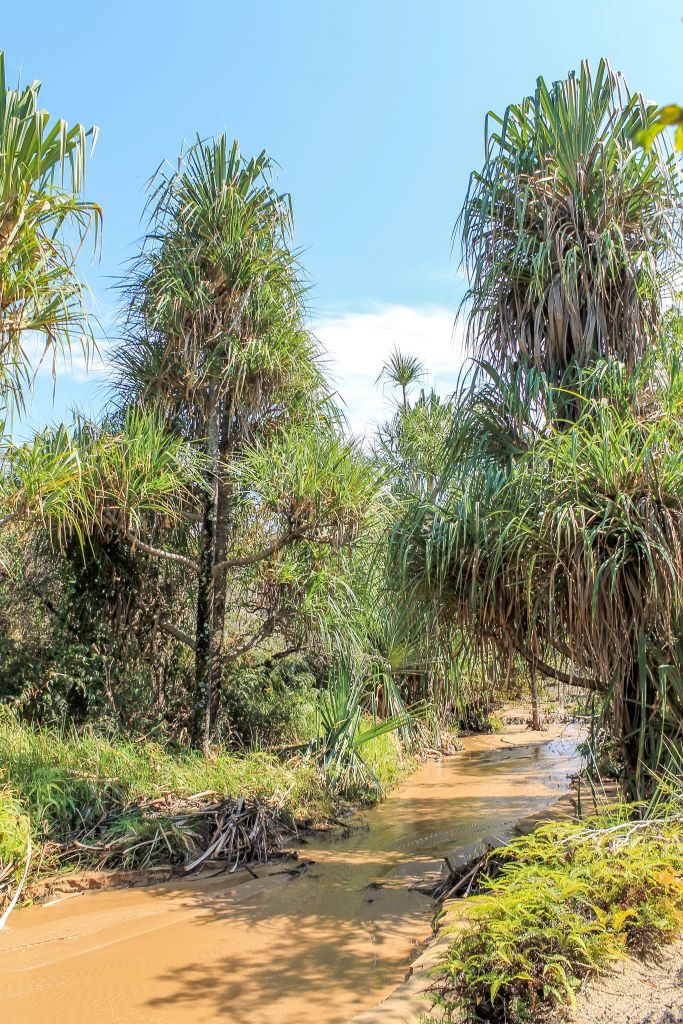
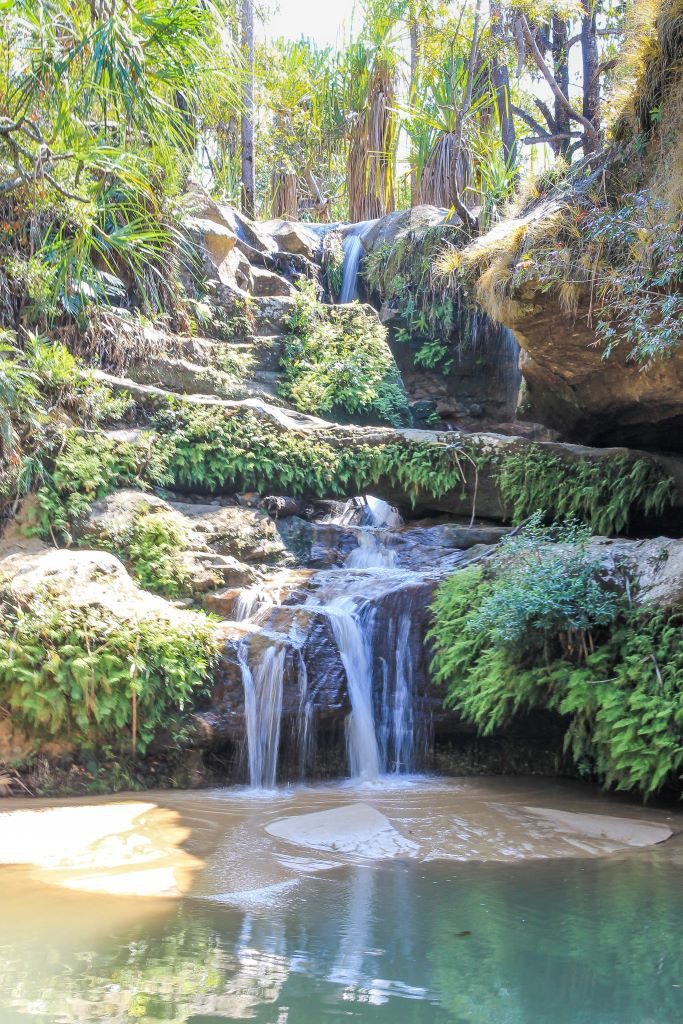
By 10 am it was extremely hot and there is little to no shade. The trees are very sparse here. Fascinating trees though, they have this thick almost brick-like bark that makes them resistant to fire. After our visit to the oasis, we continued to walk across a huge flat plateau.

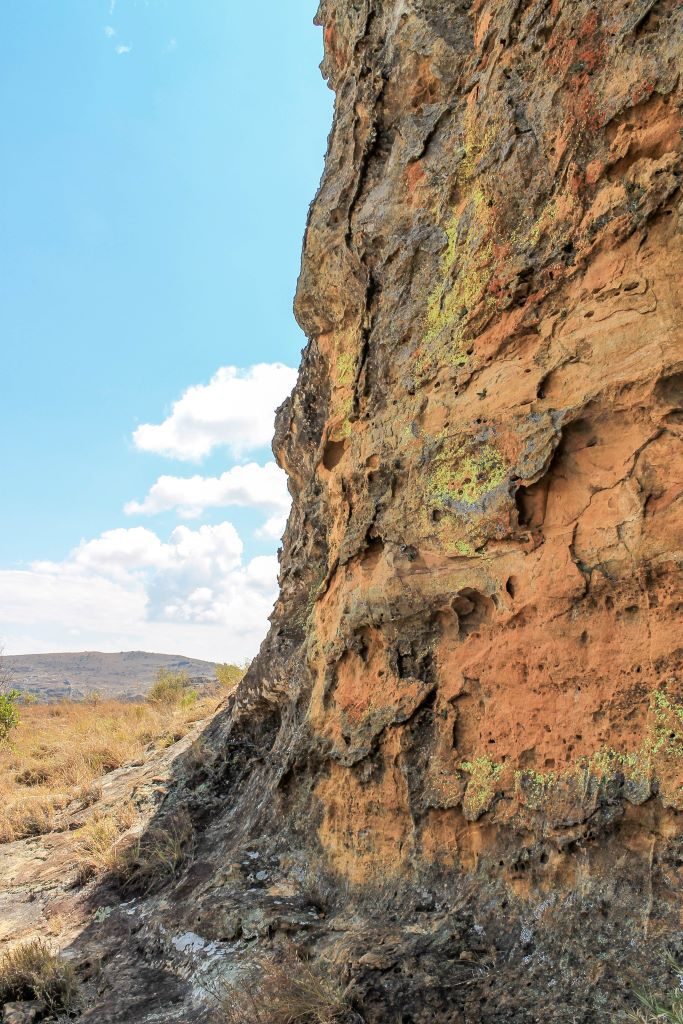
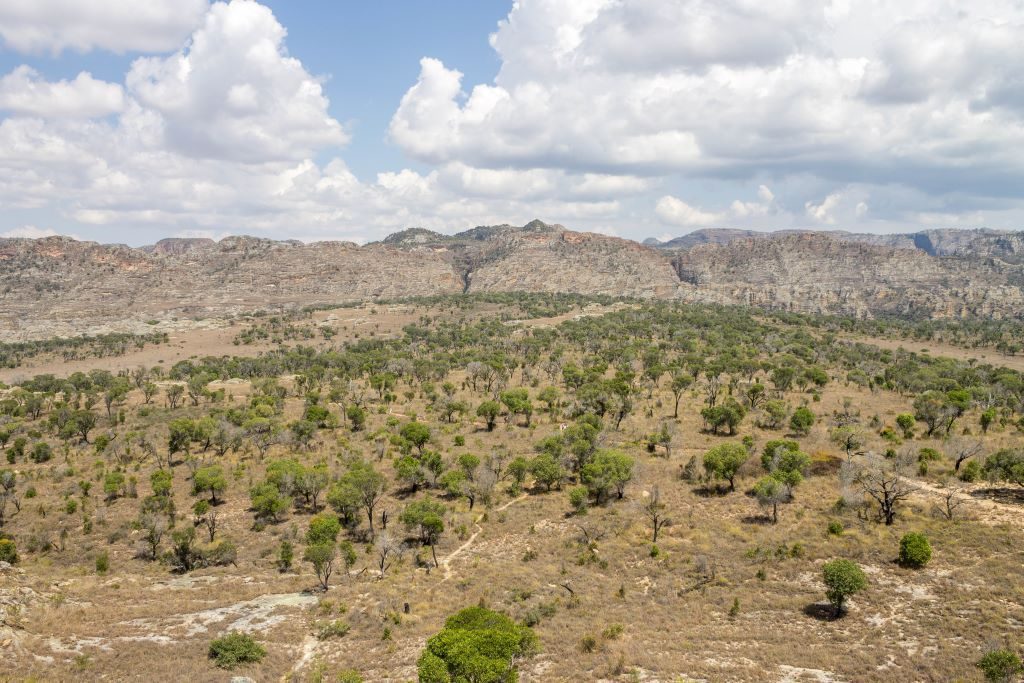
We eventually walked to the top of the cliffs we saw earlier from the beginning of our hike. From here you can look down and see the town of Ranohira in the distance as well as rice farms. It really highlights why land needs to be preserved as National Parks in Madagascar.
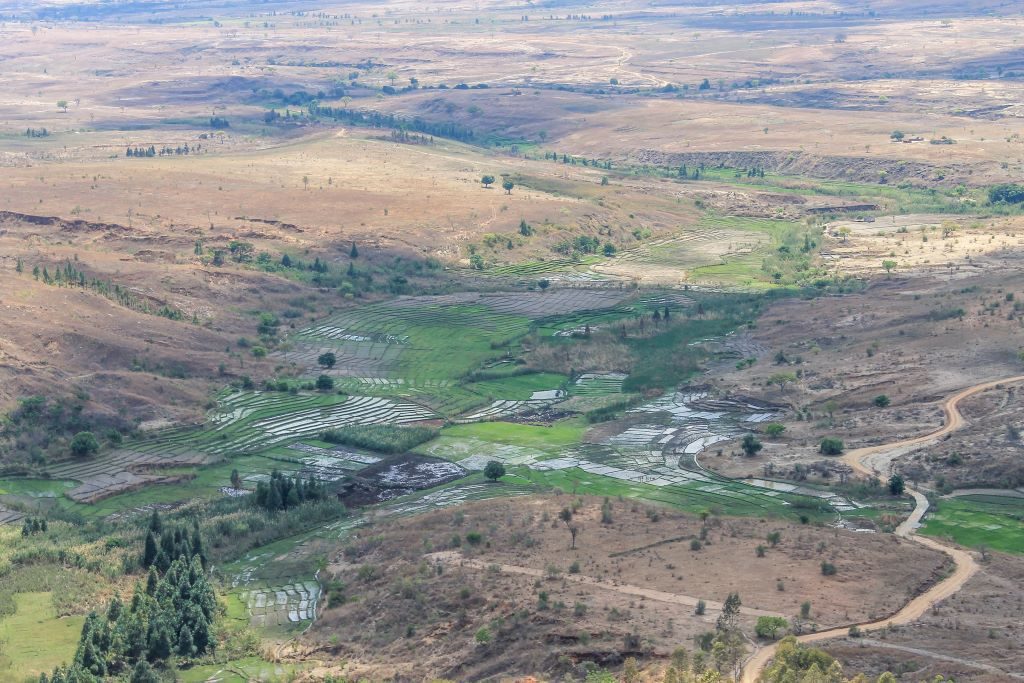
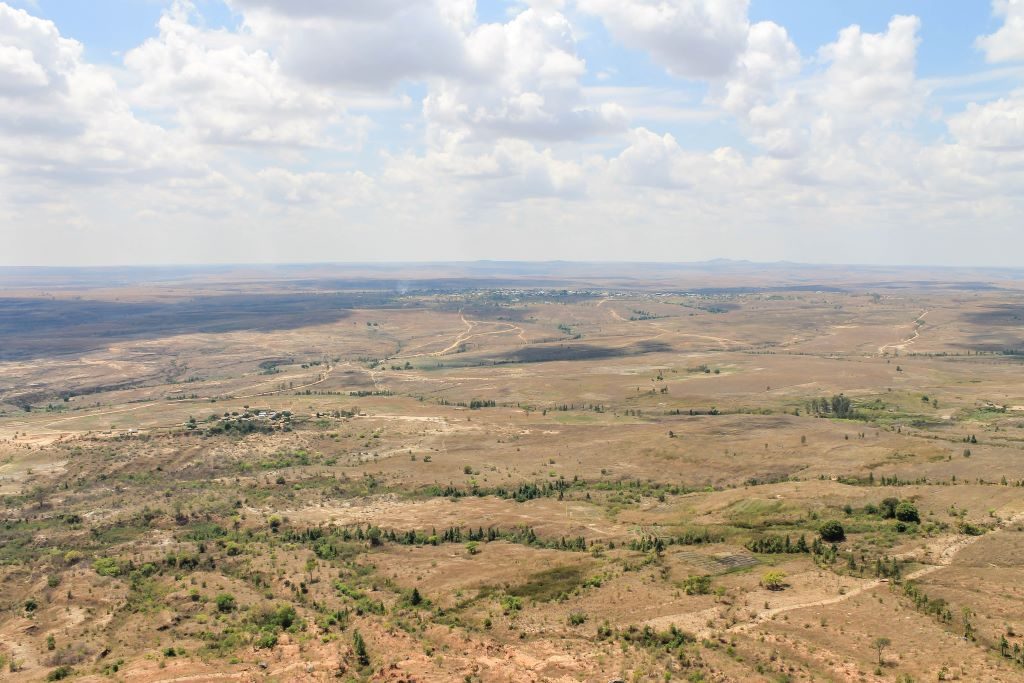
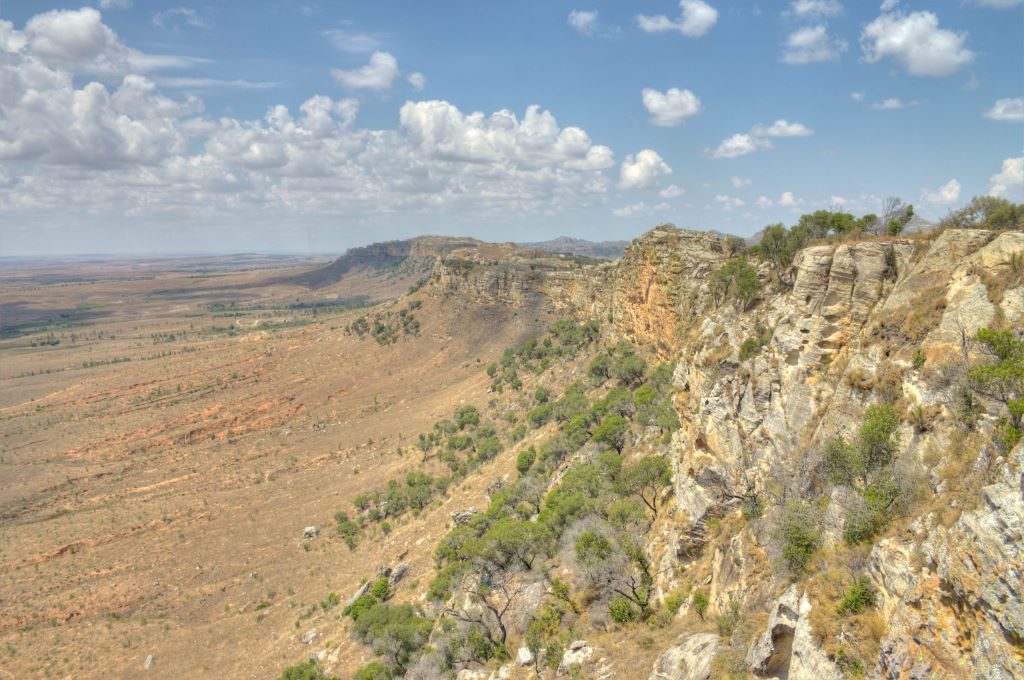
After our views of Ranohira, we walked through an area that had beautiful red rocks and sand. I love how the red cliffs here look like the rock has been oil painted onto the cliff.
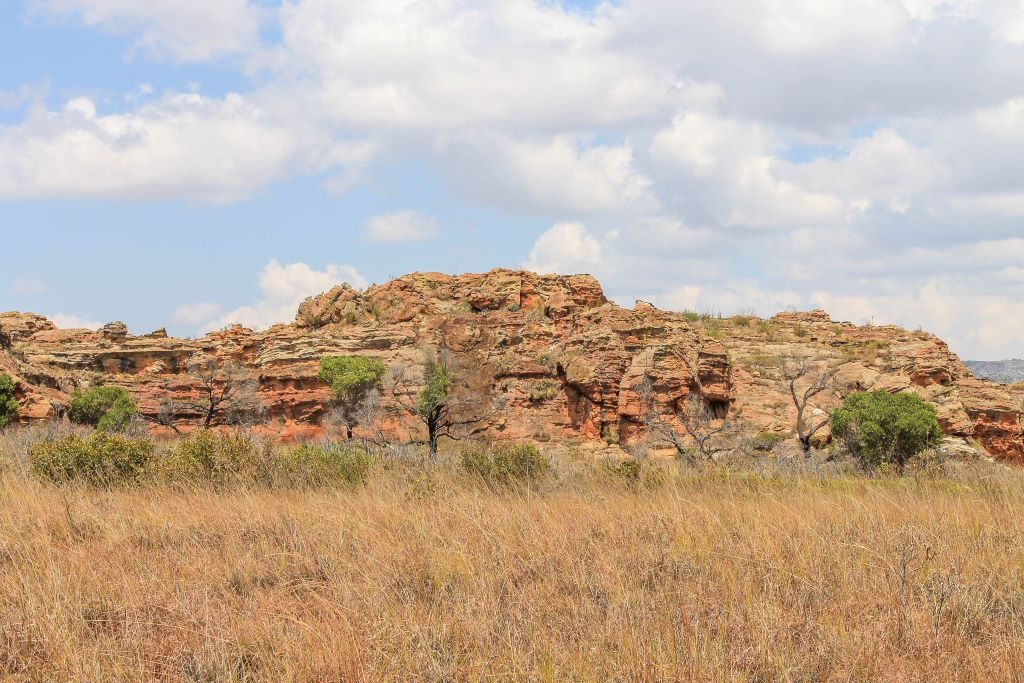
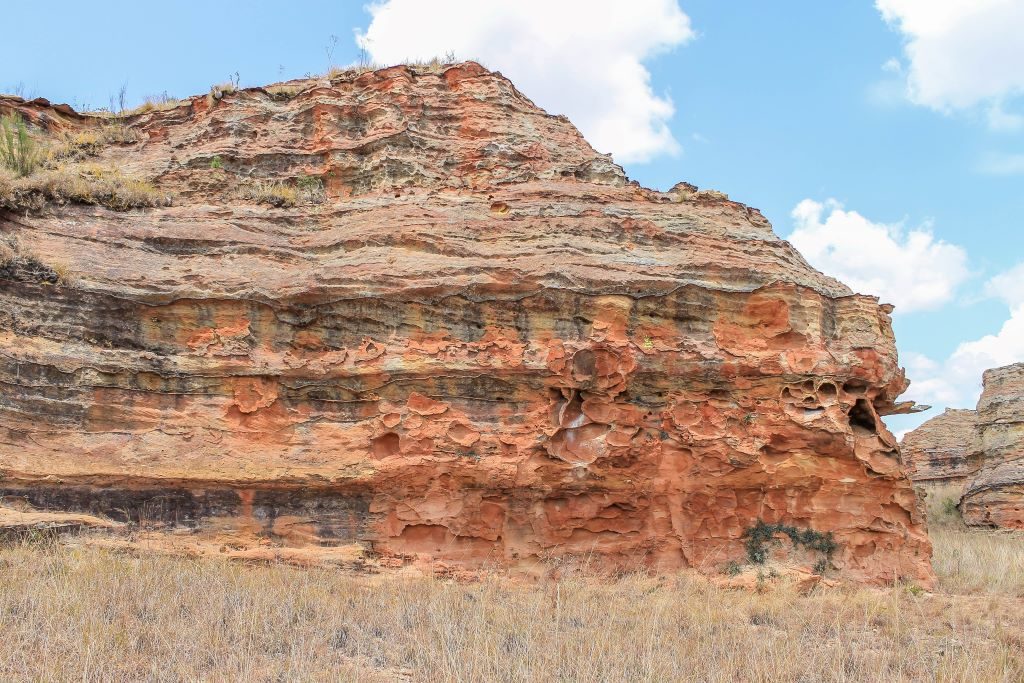
Peter took us to a fantastic lookout right on the edge of the cliffs here where you could see right into the canyon. From there we could see another guide with a group of tourists who was laughing and yelled up to Peter. It was in Malagasy so take it with a grain of salt but he asked Peter why he was taking us to the lookout. Apparently, guides usually take a faster and shorter route to a small rock in the canyon to give tourists a view and skip the one we had.
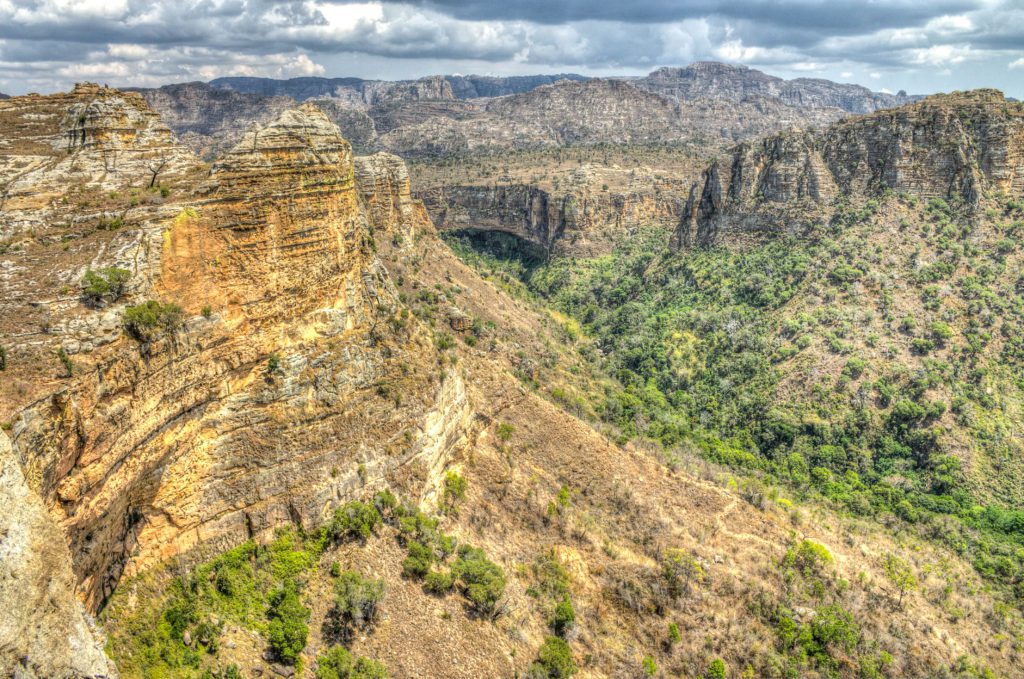
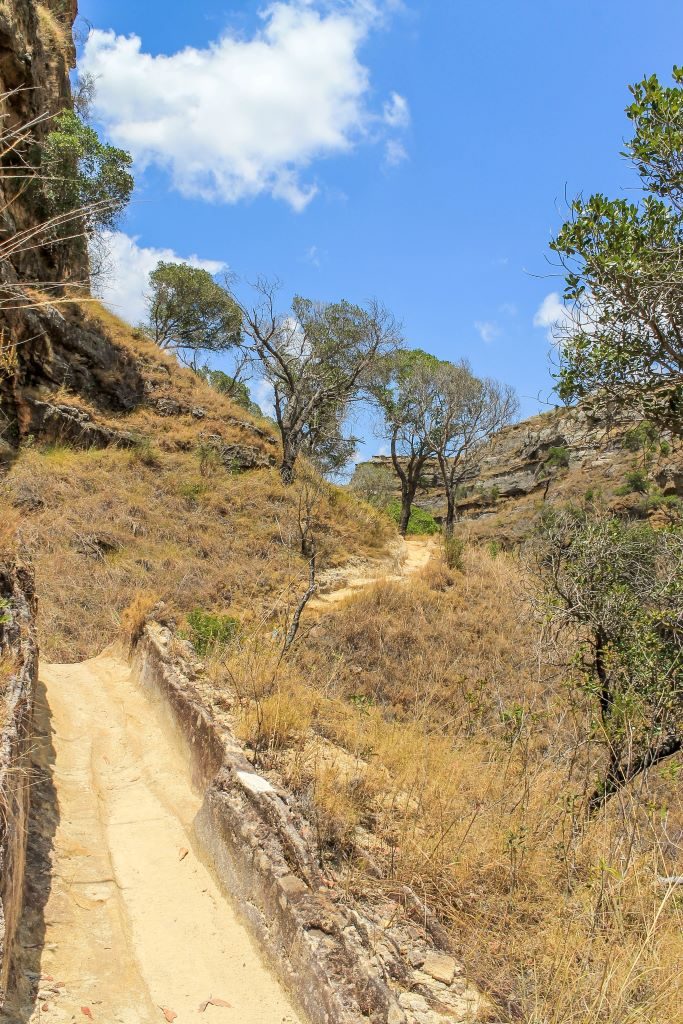

Namaza Trail and Gorge
After an amazing view over the canyon, we descended down into it. We had a brief stop to see some ring-tailed lemurs and then kept on our route on the Namaza trail that took us alongside a river.
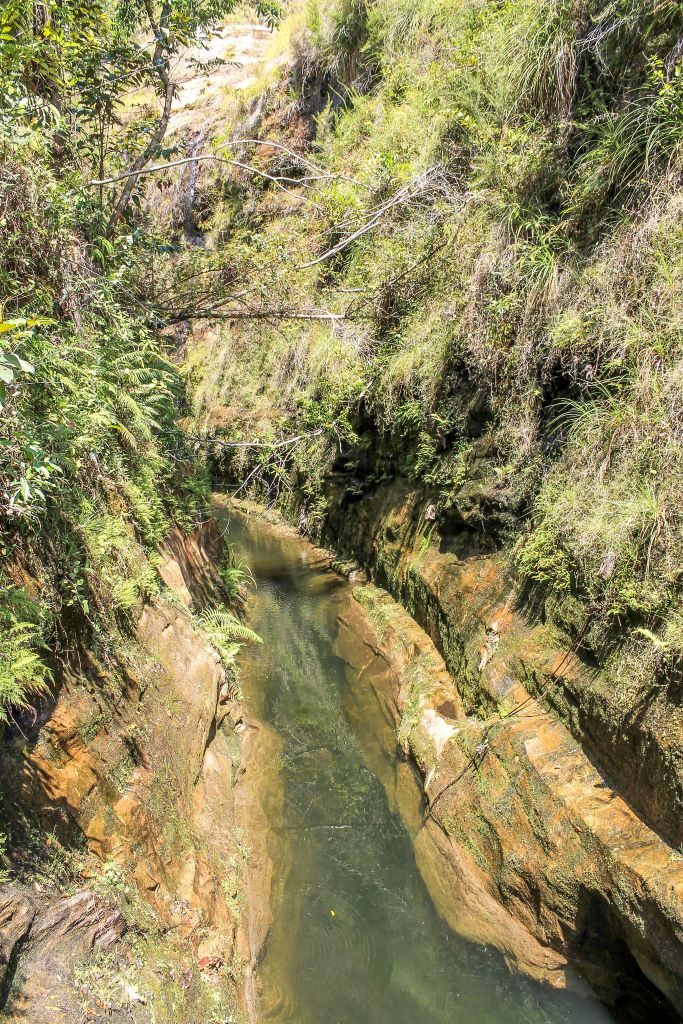
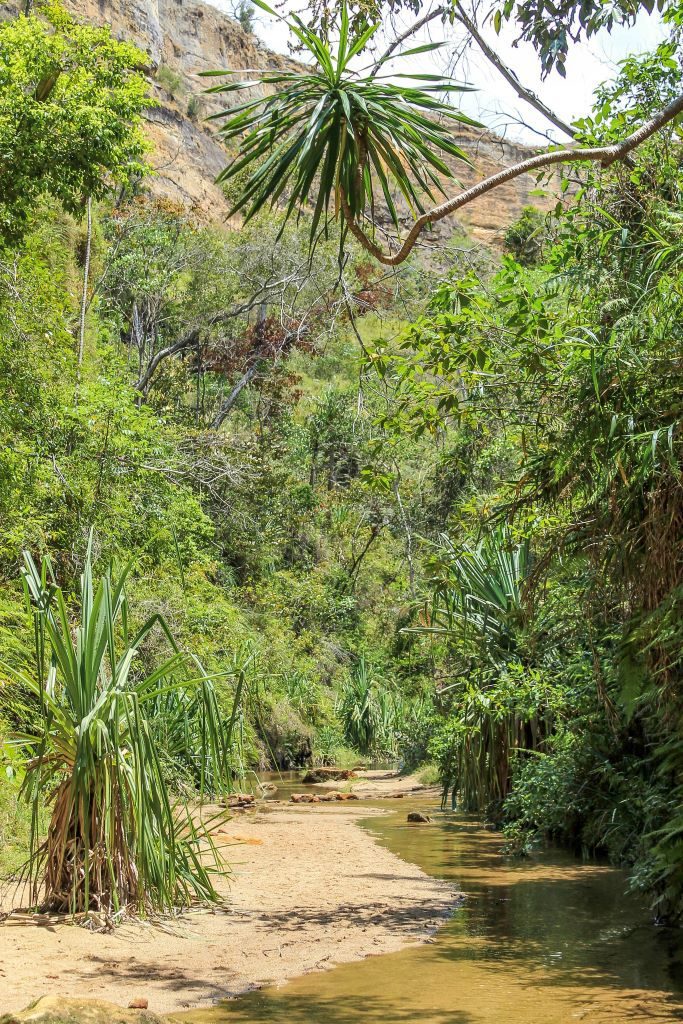

I really enjoyed the walk through the Namaza gorge. You end up at two other natural pools and waterfalls known as the Piscine Noire and Piscine Blue. Again, you could swim here if you had the time.
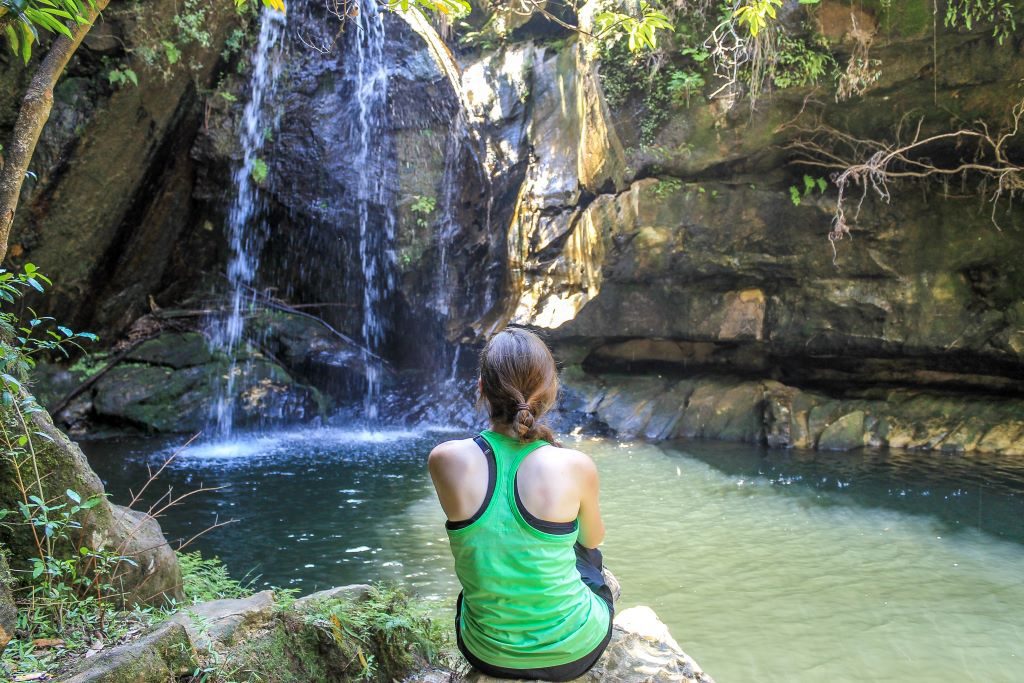
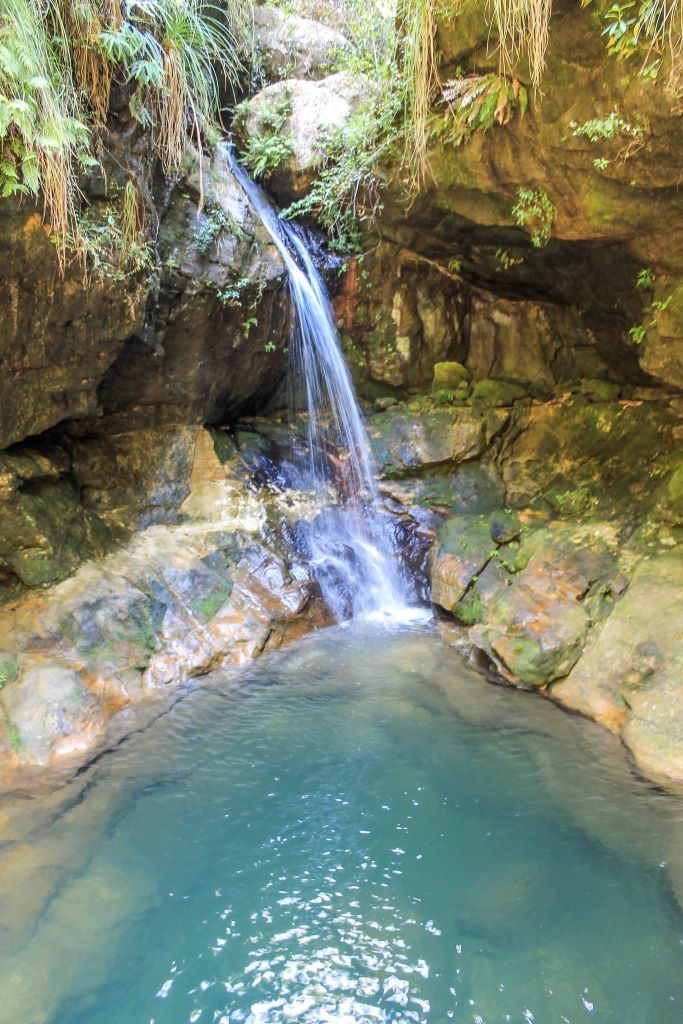
On the walk back through the Namaza gorge, we went to an offshoot trail and saw another waterfall and pool known as the Cascade of Nymphs. This was probably my favourite waterfall and pool area at Isalo. Honestly, Isalo has so many hidden little water oases, it is a joy to explore
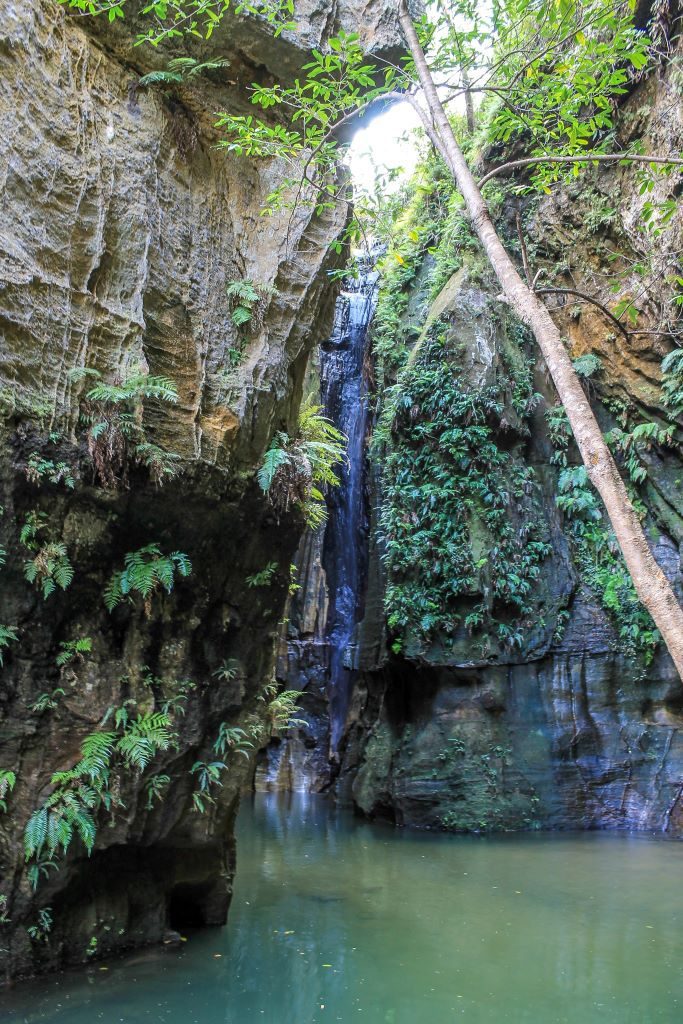
Ease of Hiking in Isalo
Overall, we were hiking for 7 hours. In that time we saw such a varied landscape and a ton of wildlife. The hiking is fairly easy because it is mostly flat but because of the heat, I would rank it more as a moderate hike. If you aren’t up for 7 hours, you can book a shorter route. I would prioritize seeing the first and most famous Piscine Naturelle and the canyon. After a visit here, you can appreciate why Isalo is one of Madagascar’s most visited natural areas. Not only for international visitors, but it is popular among locals from Ihosy as a swimming and picnic area.
Isalo National Park Wildlife
I’m going to just be honest here. I’m a biology geek. I visited here after doing some fieldwork in Ranomafana National Park because I wanted to see some of Madagascar’s wildlife in its drier climates. So I was actually geeking out about everything, as was my then field-assistant now bestie. So while Isalo has an amazing landscape, the wildlife really made this park for me. All the wildlife was seen naturally on the hike, except for the scorpion who did have his rock flipped over to find him.
Something to note about the primates here, lemurs are all at conservation risk, every single one of the 100+ species. There’s a very possible scenario when all these wonderfully wacky creatures go extinct. I know ring-tailed lemurs are pets in some places, including Madagascar, but the pet-trade and normalization as a pet are detrimental to conservation efforts of not only the ring-tailed lemur but other primates that are kept as pets. Tying this all into ethical travel, please don’t pet or feed the lemurs, they are wild animals.
If you’re looking for ethical animal encounters in Africa, chimpanzee trekking in Uganda is another great option for viewing primates.
Ring-tailed Lemurs
It’s almost guaranteed you will see some ring-tailed lemurs while you are at Isalo National Park. They are not very afraid of humans so you can get great photos of them without needing any special lenses. I visited in October so I was lucky enough to see baby ring-tailed lemurs. If you can, visit in September or October to increase your chance of spotting lemur babies.
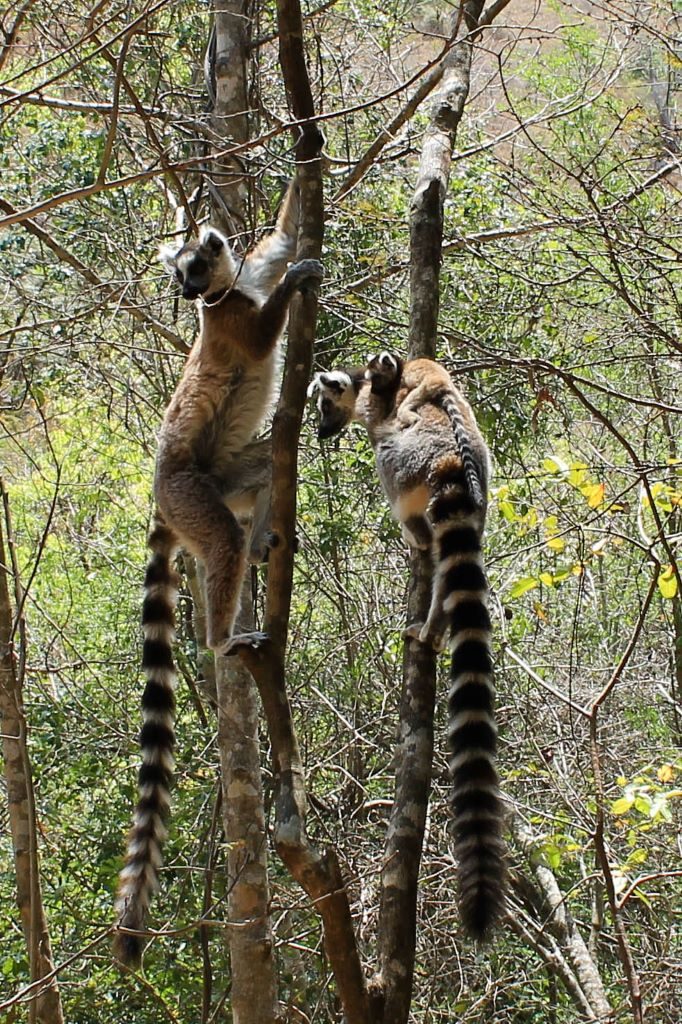
Brown Lemurs (Red-Fronted Lemur)
Another easy to spot lemur at Isalo is the Red-Fronted Lemur. I saw them casually hanging out in the picnic area at Isalo. Then I realized its because they were just casually eating Saltos, a popular brand of cracker in Madagascar. A very cute lemur and again, lemur babies if you look closely to the creases of the back legs of the lemur you can see little baby lemur heads poking out. One lemur here had twins.
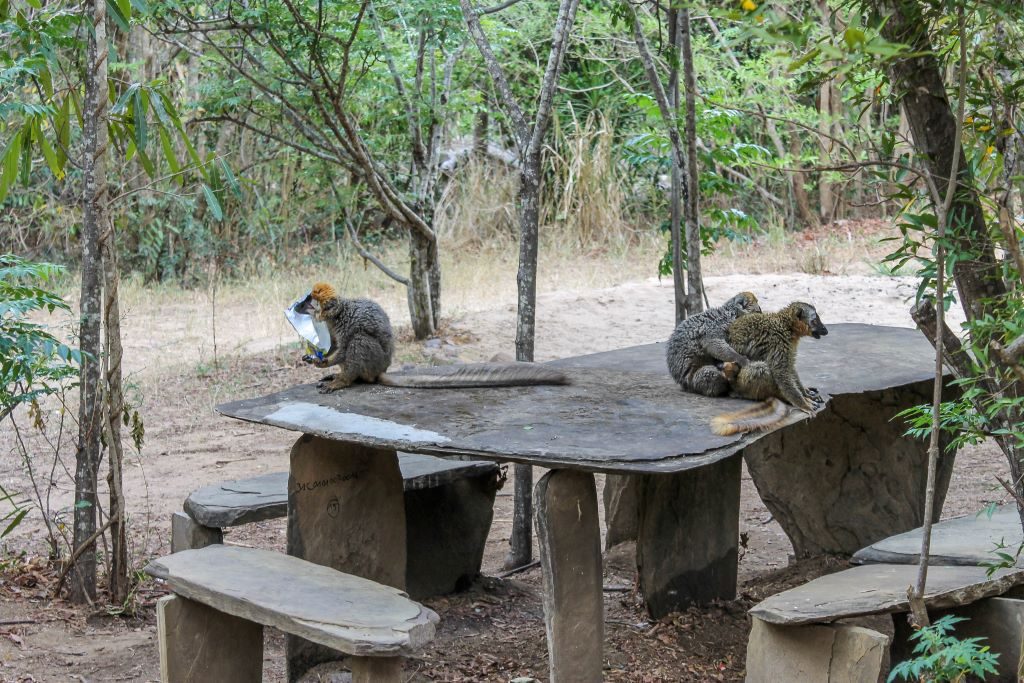
Verreaux’s sifaka
The Verreaux’s sifaka was the one I really wanted to see as Isalo. Unfortunately, luck was not on my side. I didn’t get to see the sifaka but they are often hanging around and you have a reasonably good chance of seeing one on your visit. I saw another species of sifaka in Andasibe National Park and in Ranomafana National Park so perhaps I was just getting sifaka-greedy. The clinging and leaping travel style they use is really neat to see so if you have the time, try and spot one on your trip to Madagascar.
Birds in Isalo
Isalo park does have some neat and beautiful birds in the park, and I managed to spot a few. Highlights include the rock thrush, Madagascar paradise flycatcher, and Souimanga sunbird. Sunbirds are vibrantly coloured birds that if you are lucky, you will spot feeding on the nectar of flowering bushes and trees. You may also be able to spot some sleeping owls. My guide and hiking partner both pointed out an owl in a tree to me about a dozen times. I never could see it until at home when I looked at the photo I took of what seemed to just be an empty tree.








Reptiles and Amphibians
As it is a dry desert-like environment, there are reptiles. I saw fairly large lizard with a spiky tail (Oplurus sp.) sunning itself on some rocks here as well as some skink-like reptiles known as mabuya near the river here. I also was lucky enough to spot a gecko hanging out in a tree. There are chameleons in Isalo but I missed out on seeing any.





Insects
Madagascar also boasts some wonderful insects. Isalo is home to at least one type of scorpion. Our guide flipped over rocks to find them for us. Apparently, the scorpion we saw doesn’t cause death, just paralysis for a few hours. There’s also the wonderfully vibrant rainbow milkweed locust that you hopefully will see. It’s extremely toxic because of eating milkweed but are safe to handle. Tons of stick insects hang out on the trees and bushes at Isalo but they blend in extremely well.









Plants in Isalo National Park
One of the plants that you are sure to come across is the Elephant Foot plant. This is a rather small plant that looks like its namesake. It has vibrant yellow flowers and is found in much of the park, including on the side of cliffs. Another common site are the aloes that you can find scattered across the plateau
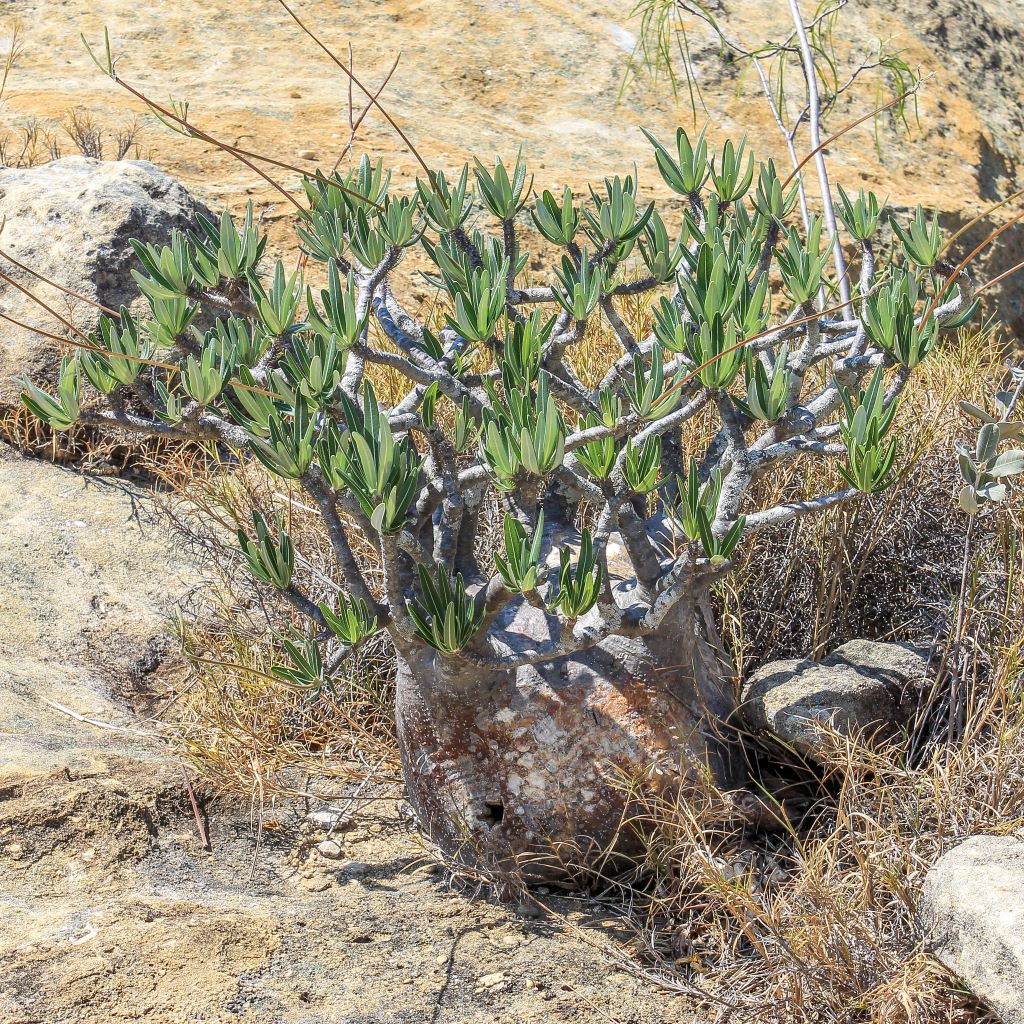
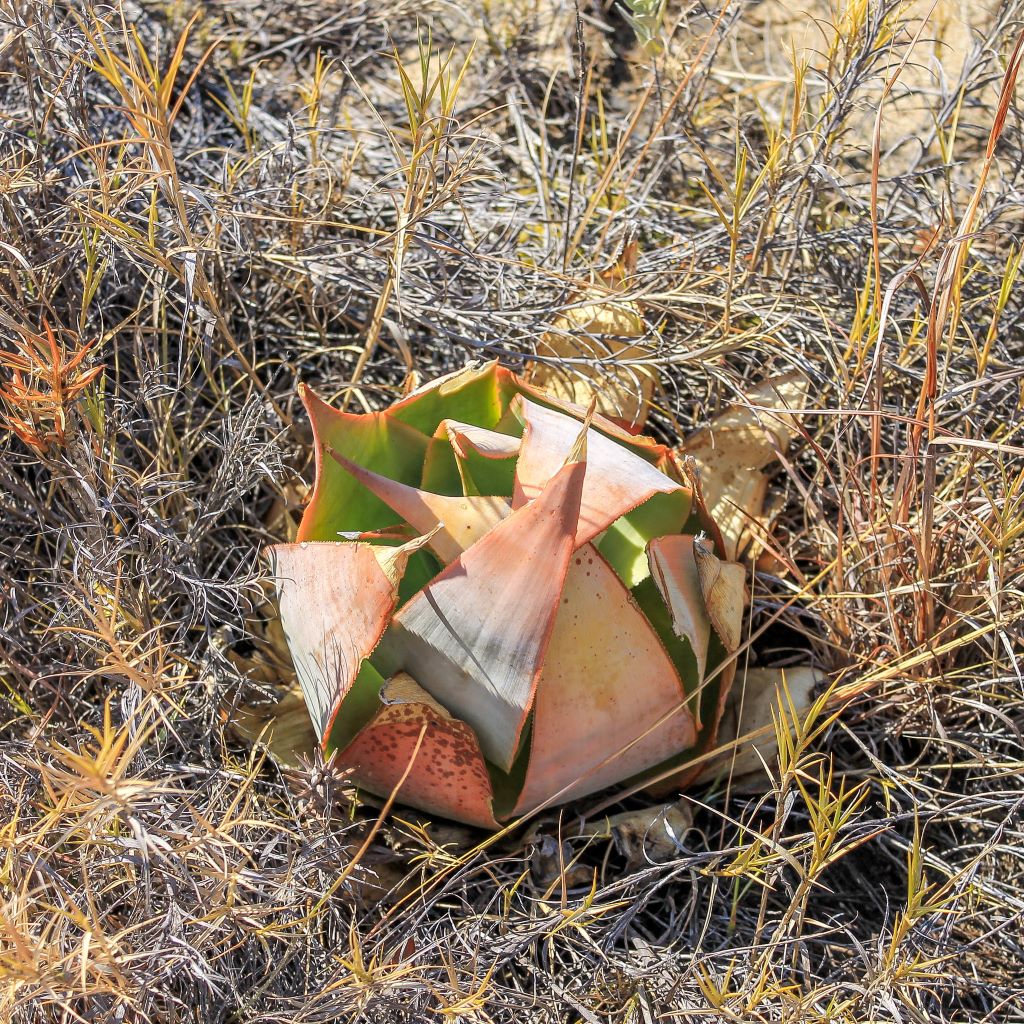
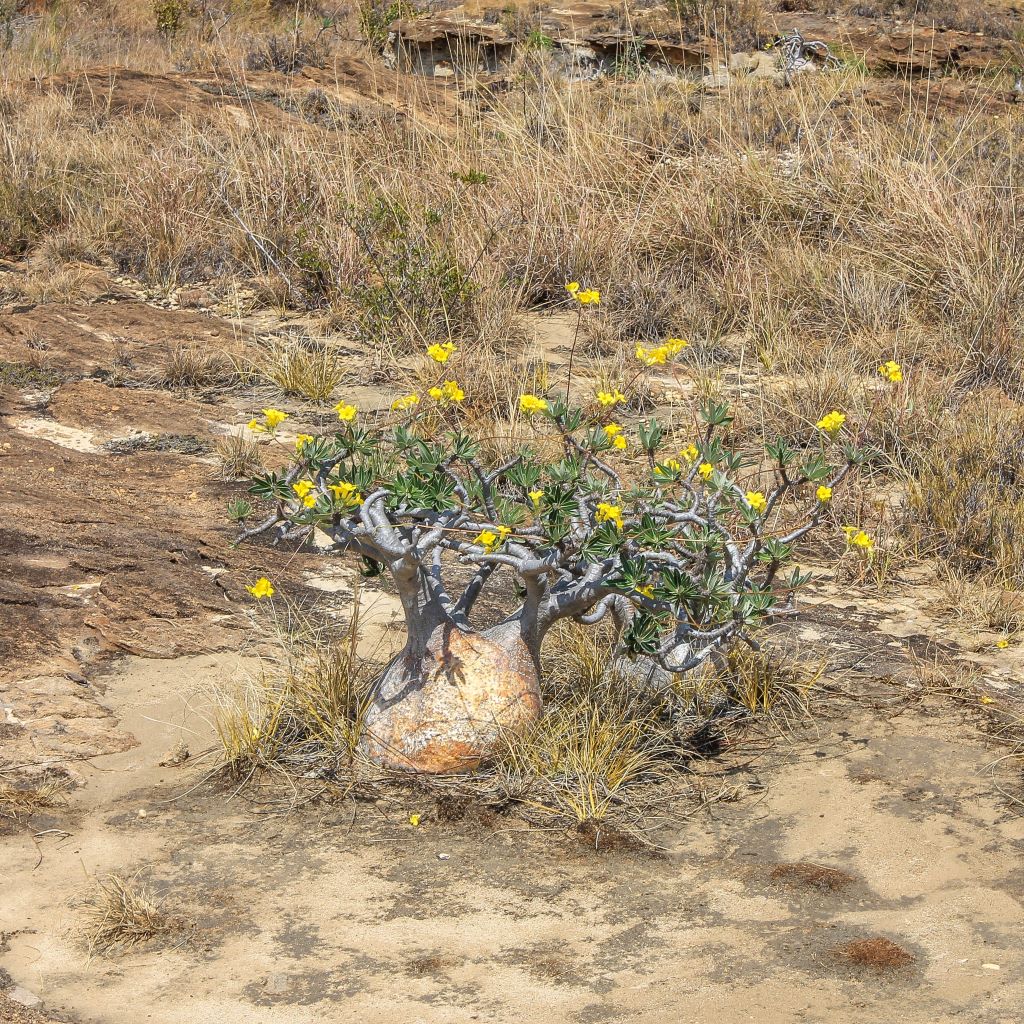
As mentioned above, there are trees here that are fire-resistant because of their thick bark. In areas near water, there are carnivorous sundews that you can spot growing among the ferns. Near the piscine naturelle, you will spot large palm and pandanus trees.
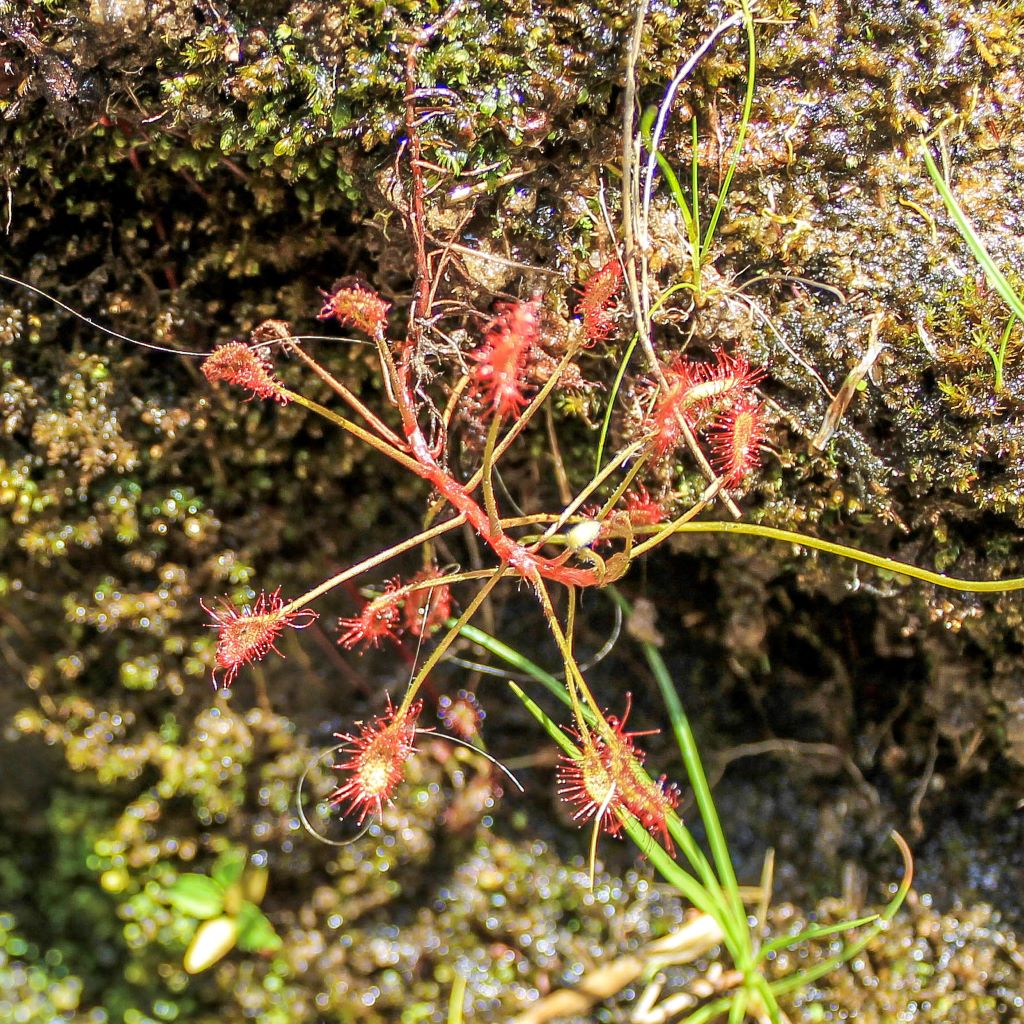
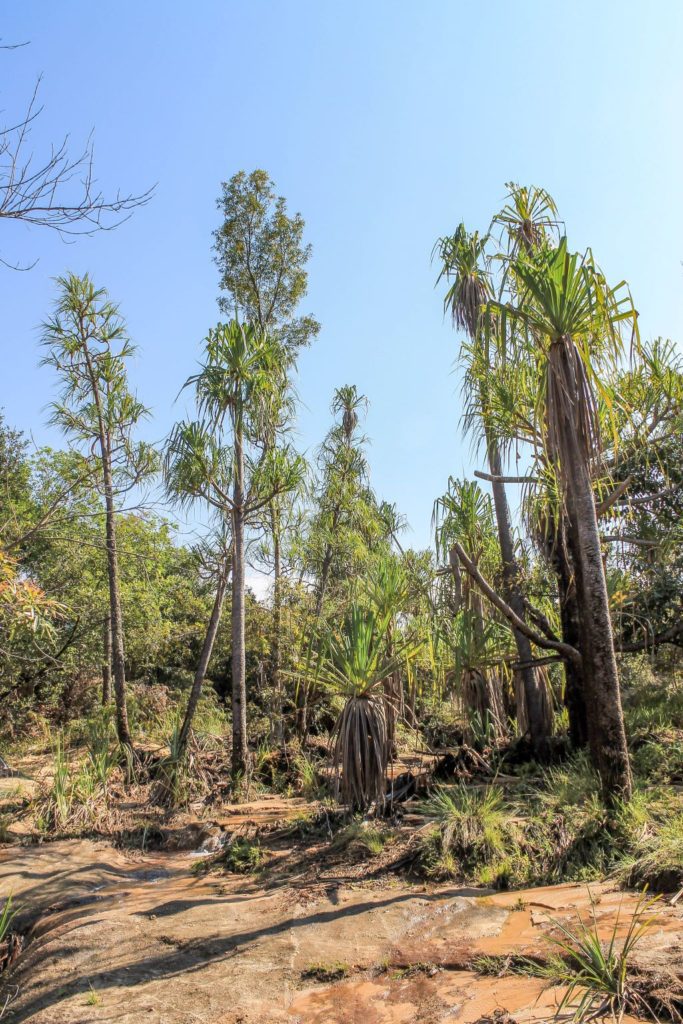
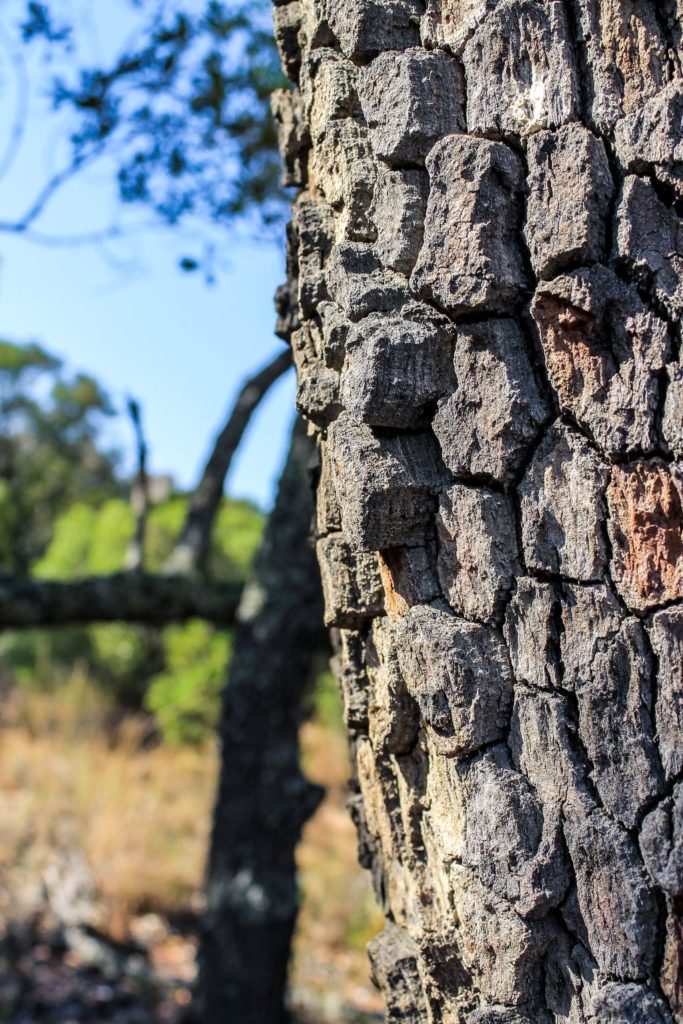
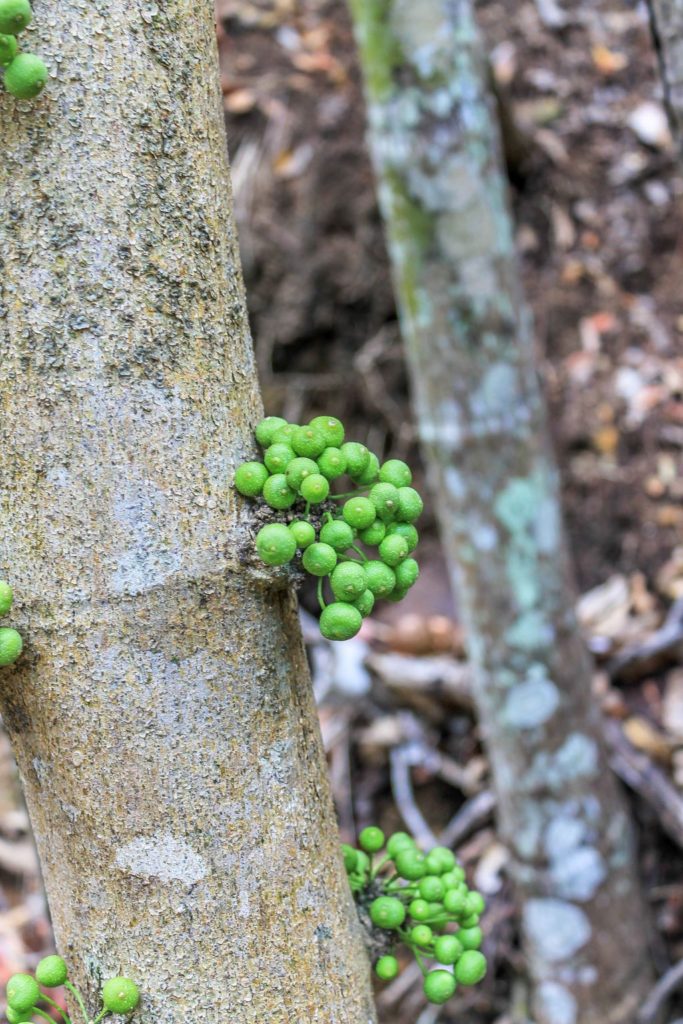
When I visited there were also lots of things in bloom, including red Madagascar periwinkle and a variety of trees.
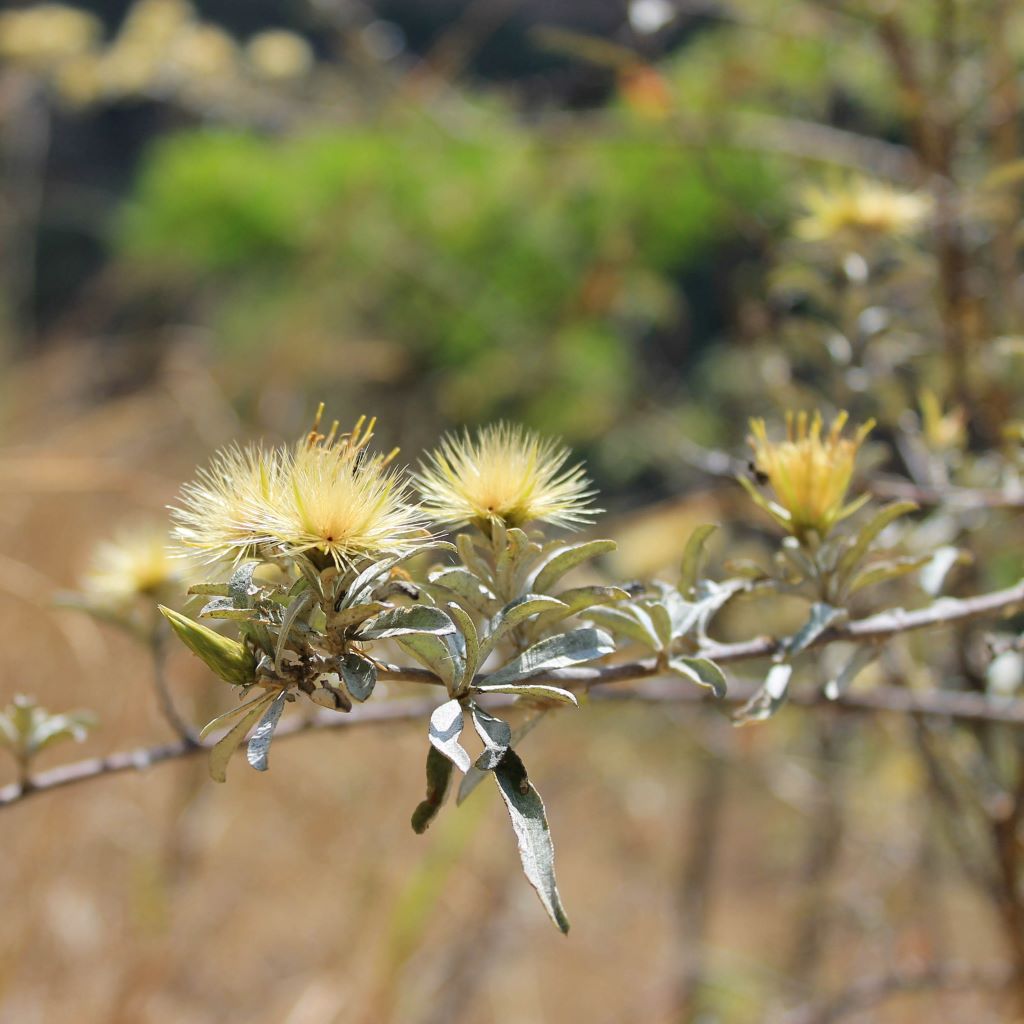
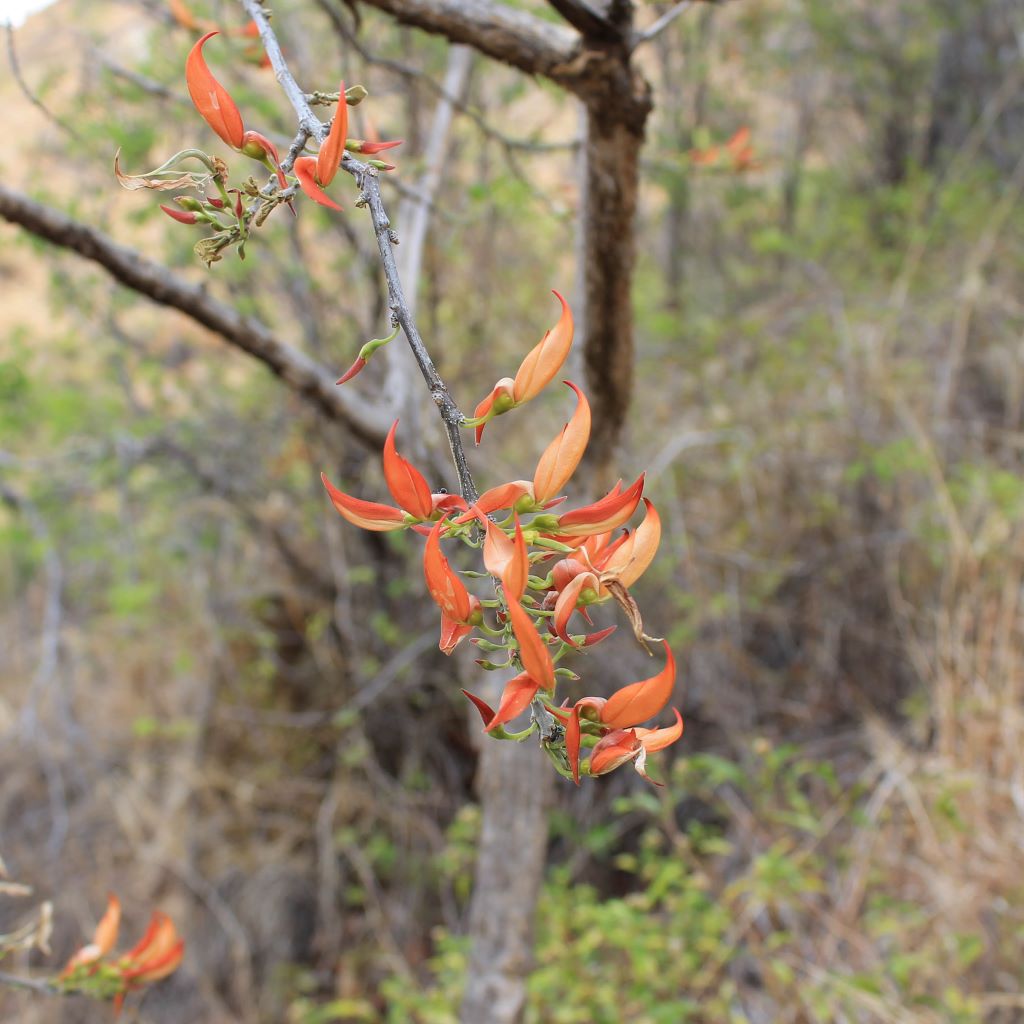
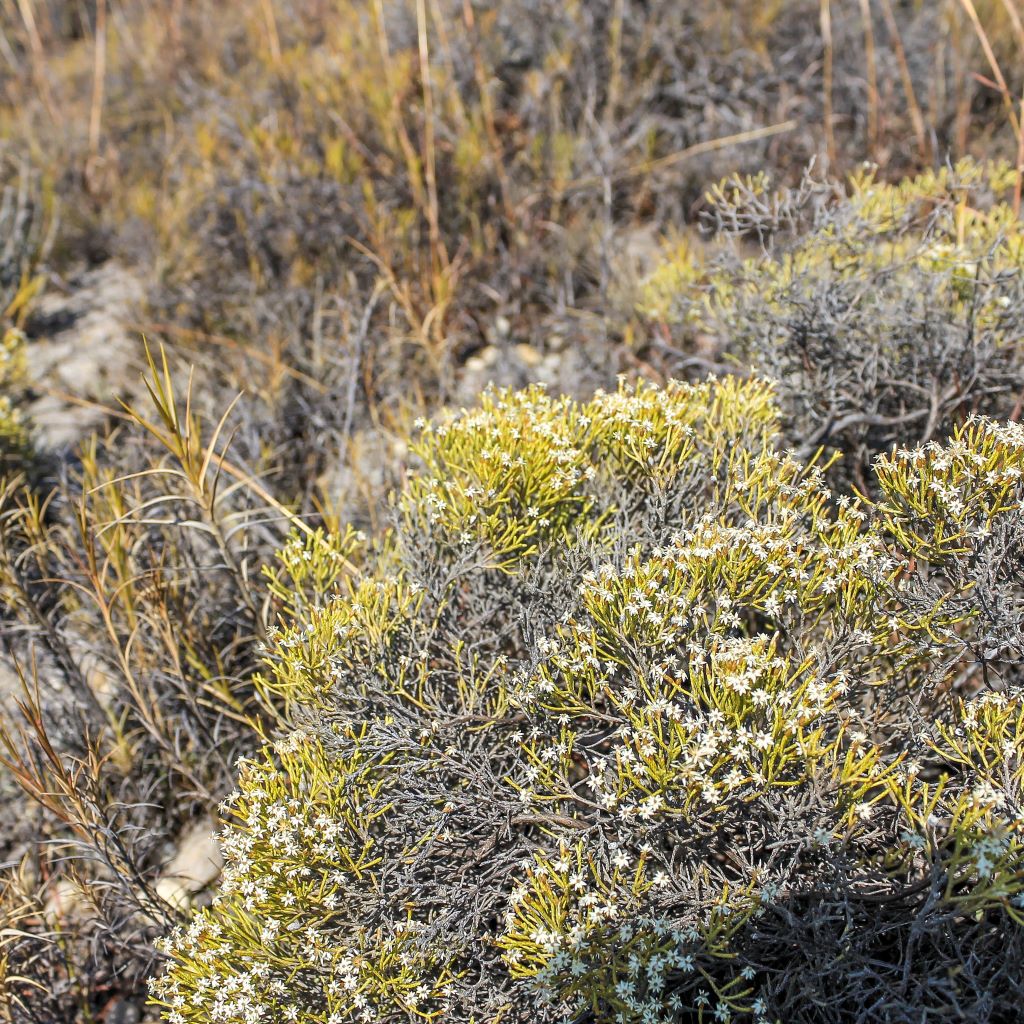
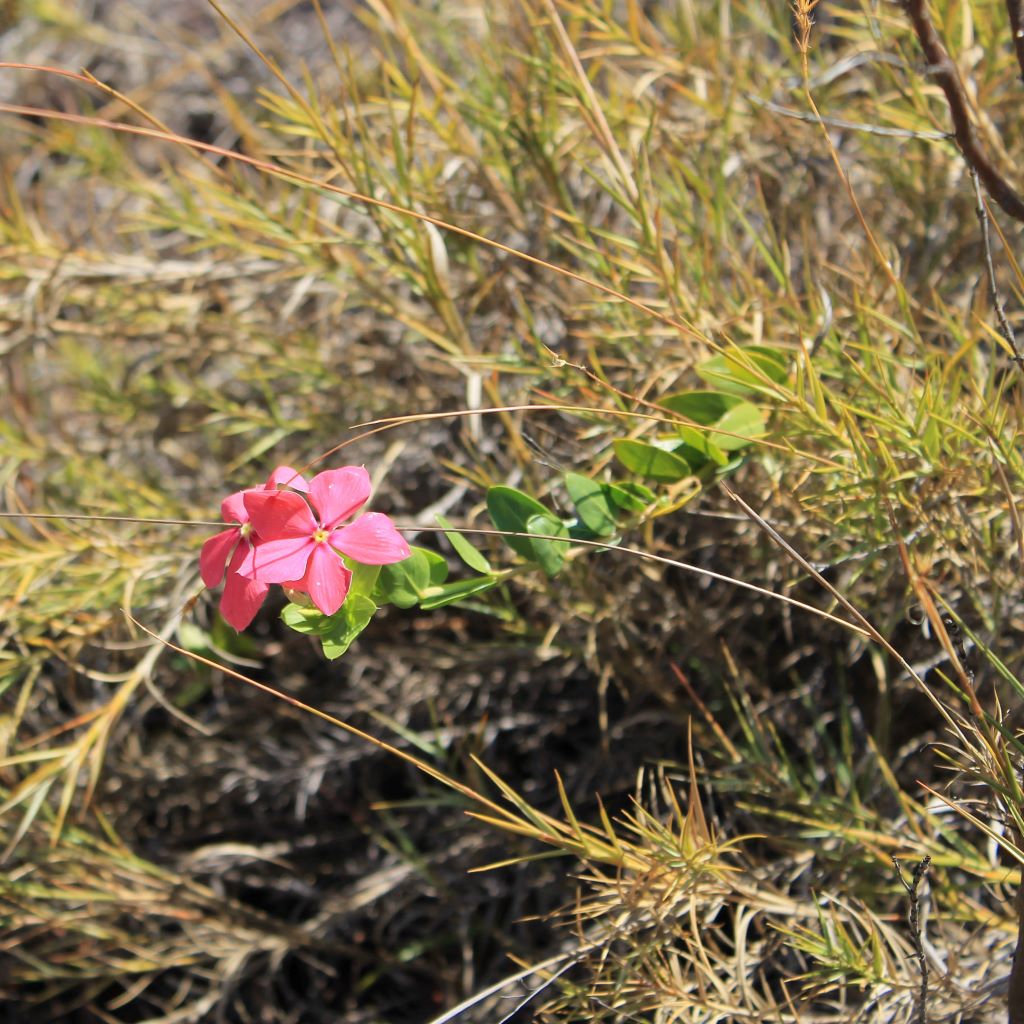
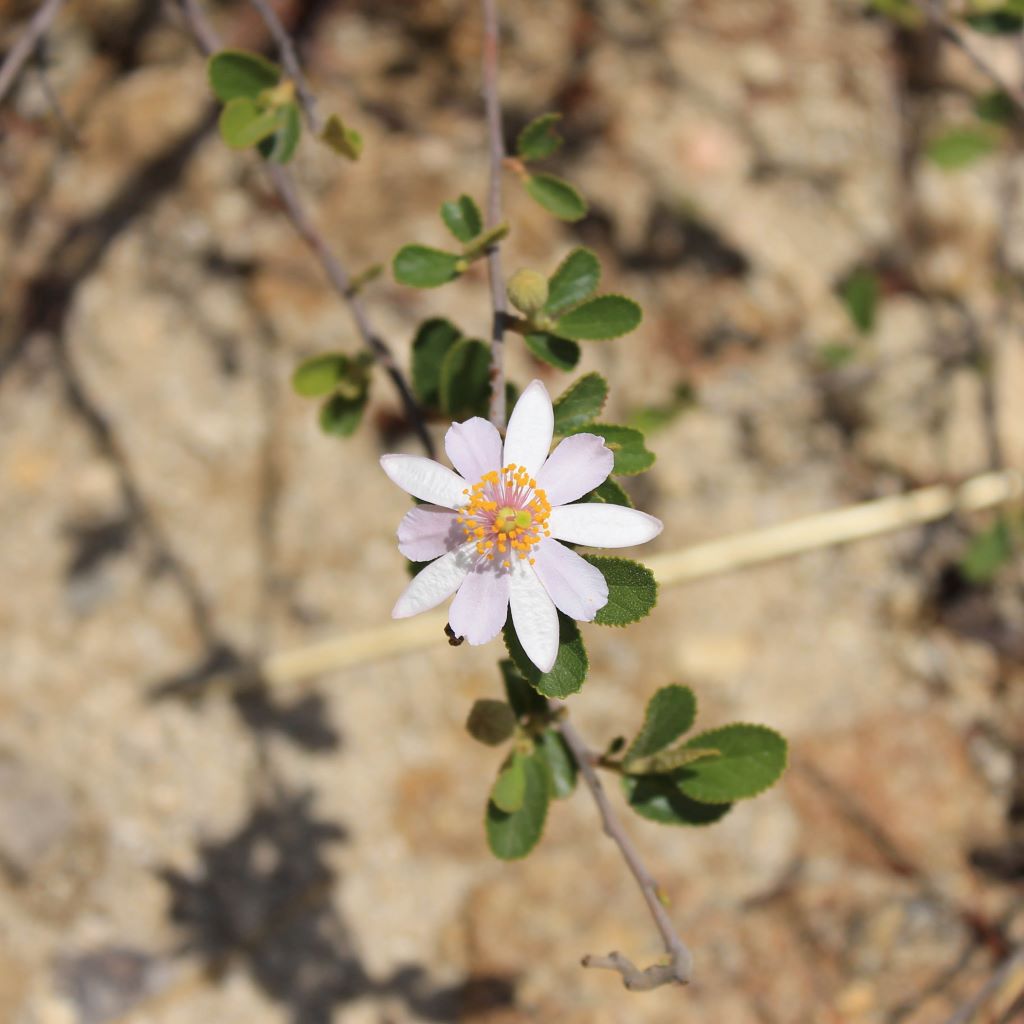
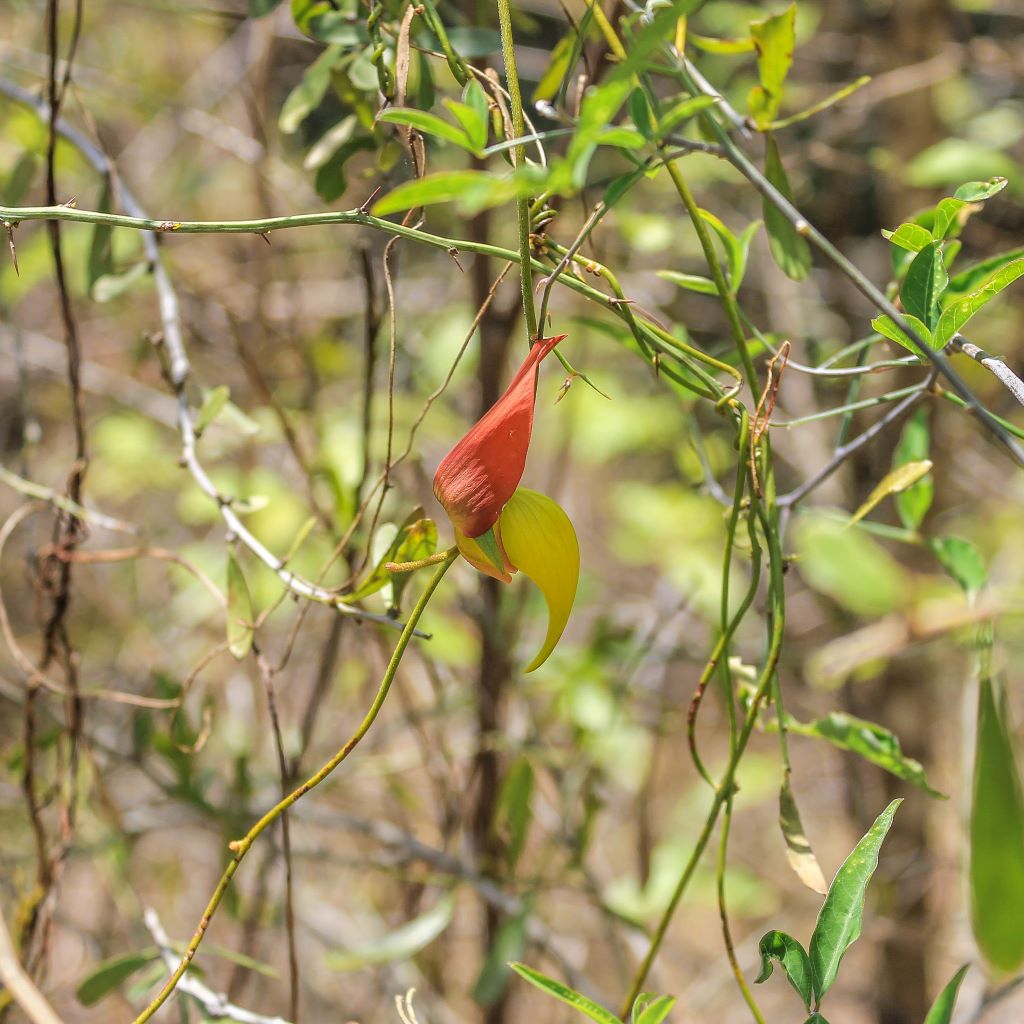
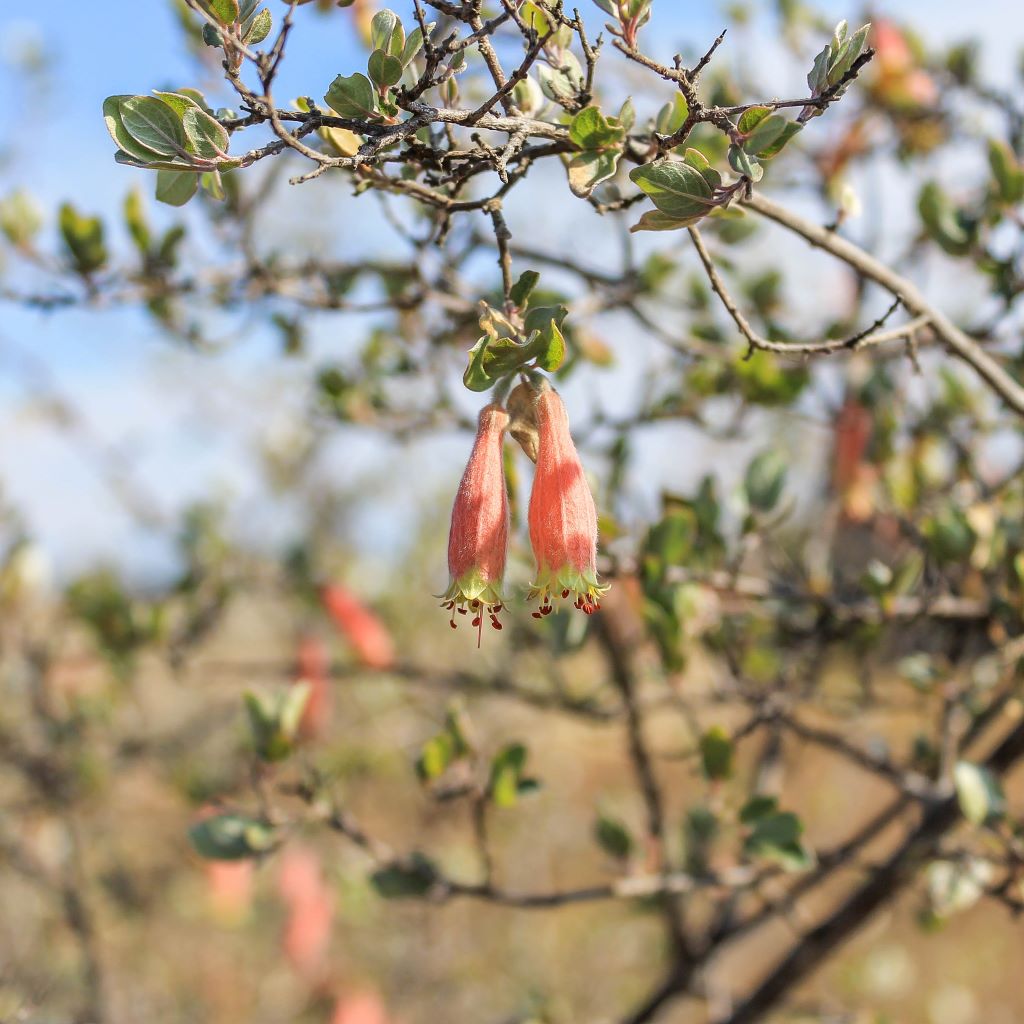
A Must for any Madagascar Itinerary
Isalo National Park features on many Madagascar itineraries, in part because of being located right off of the RN7 highway. I only got to spend one day in the park and easily could have spent the better part of a week. Besides being a gorgeous landscape and wildlife destination, the park is large enough you don’t bump into many other groups of tourists. The atmosphere here is so peaceful and serene, it truly is a Madagascar bucket-list destination.
Like this? Pin it for later!
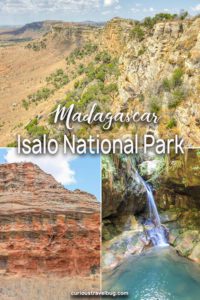

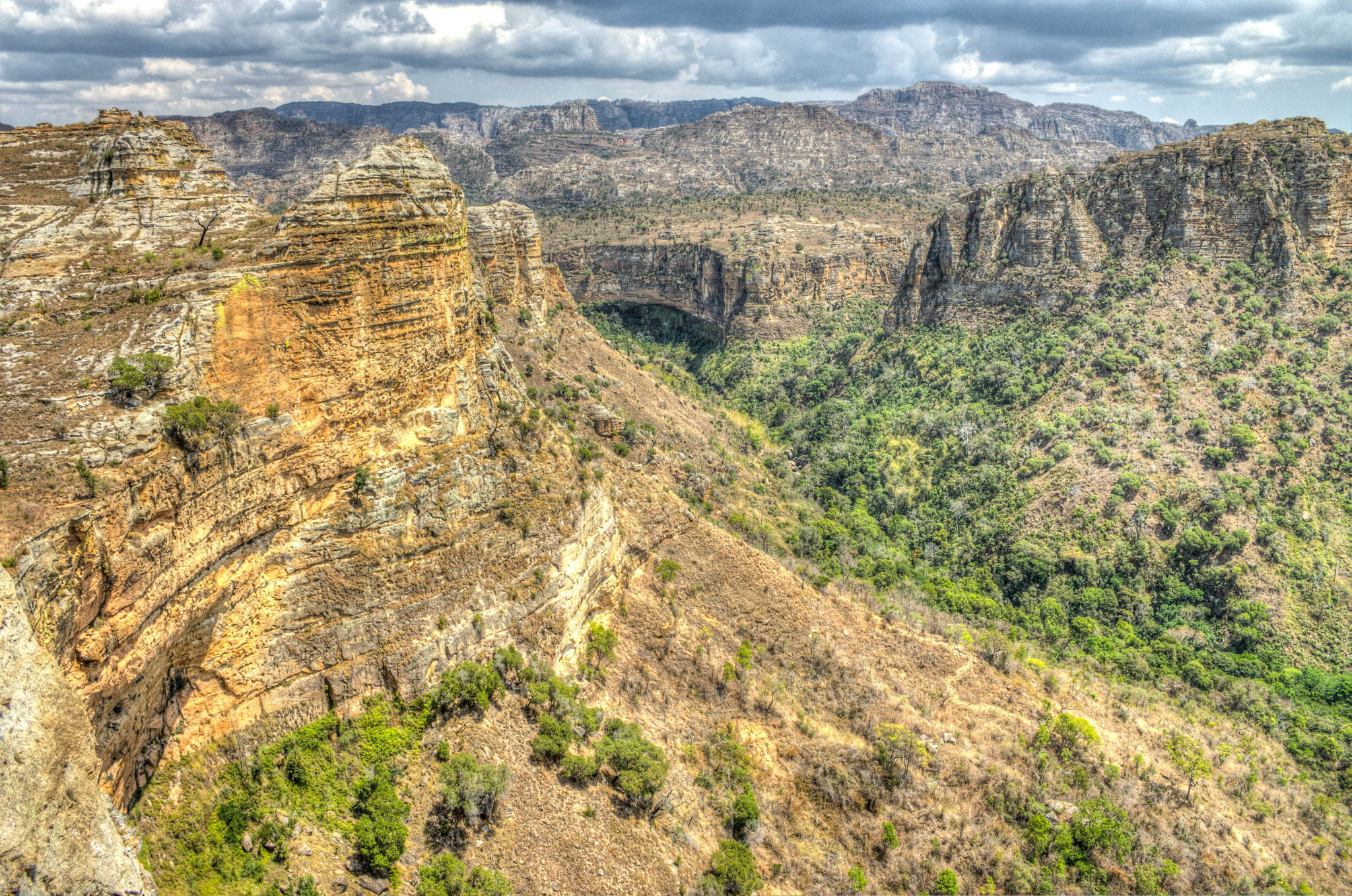
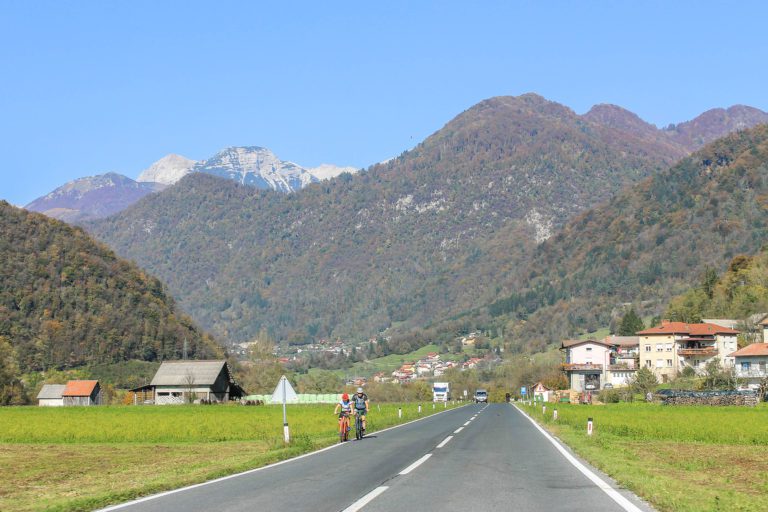
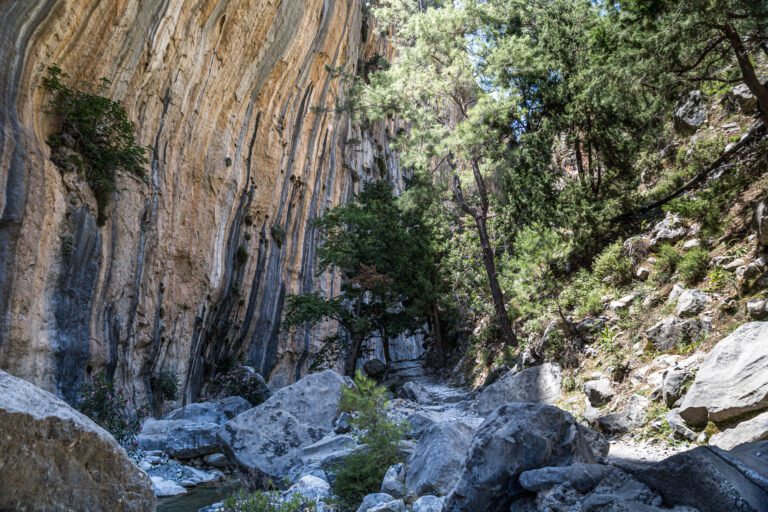
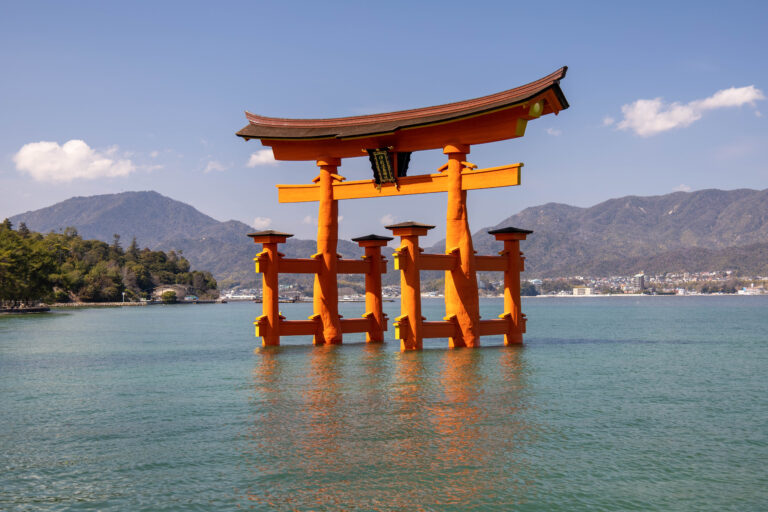
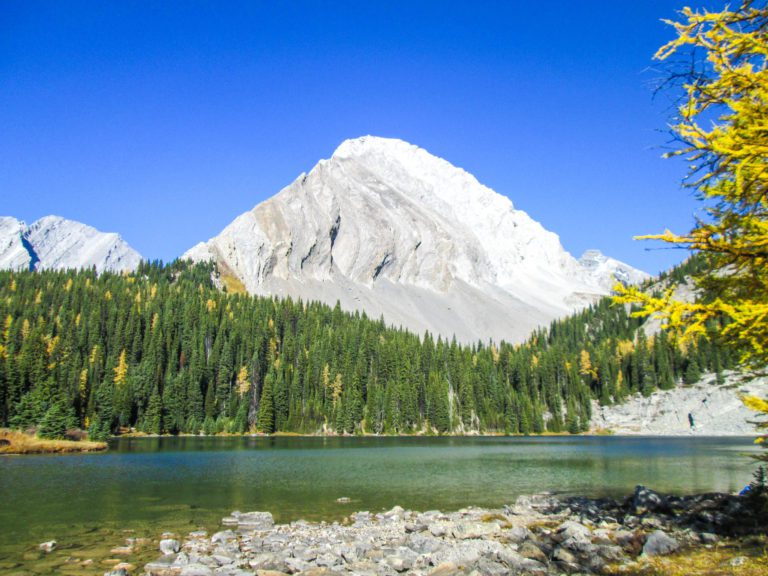
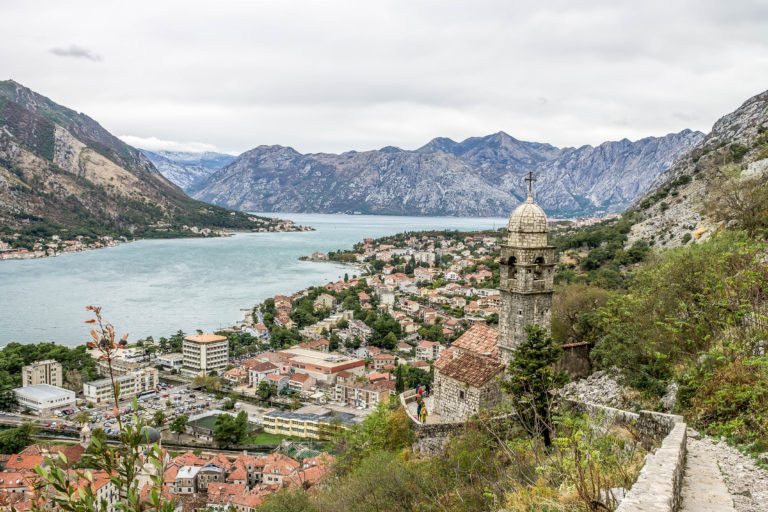
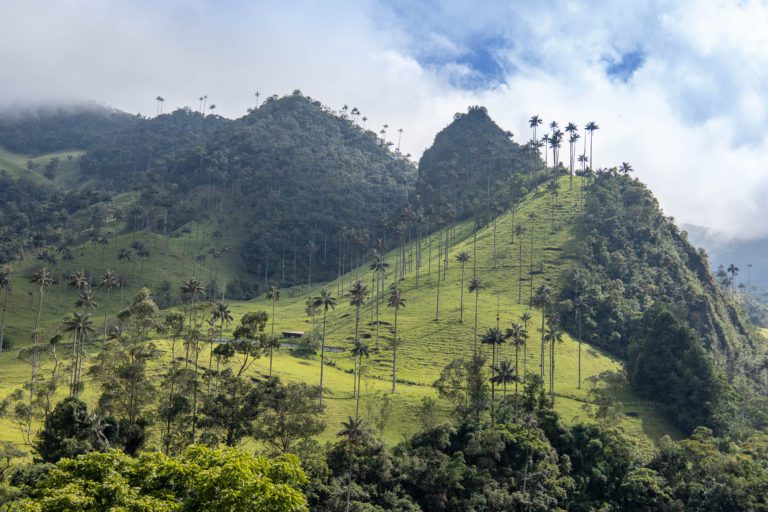
Madagascar is definitely on our bucket list and I’ve been looking for more detailed information on travelling there. Your post is so helpful. Thank you!
Glad you enjoyed the post! Madagascar definitely is a bucket list type of place, hope you get a chance to visit there soon:)
Thank you so much Brianna for highlighting one of the incredible places of Madagascar. I wish I could see more, for real, about Isalo one day, I really love that place.
Nicolas, I’m so happy you like this post! Isalo is such a wonderful place, I would love to spend a week there camping. Hopefully one day 🙂
Omg I love the pictures of the lemurs. Isalo National Park looks like a definite must to visit. I would love to do some hiking through there.
The lemurs are very cute! It was a great place to hike, I actually wish I had more time at Isalo to do one of the multi-day hikes
I love lemurs and would love to see them in person! Isalo National Park looks wonderful and the Cascade of the Nymphs is so pretty.
It definitely is wonderful to see the lemurs in person. Isalo is such a beautiful place to visit
Wow, this hiking adventure looks incredible! I’ve always dreamed of going to Madagascar, and I love to hike! Your pictures are incredible. Looks like there’s so much to see and do at the Isalo National Park.
Thanks Nikki! Madagascar is a great place if you love hiking. I could have spent a lot longer at Isalo and would love to return and do a multi-day hike there.
Talk about a comprehensive post! You’ve got everything I need in here 🙂
Isalo National Park looks like a gorgeous place, with so much wildlife and beautiful views.
Thanks Katherine! Isalo is really gorgeous, I was so pleasantly surprised by it as I had no idea what to expect of it beyond a description in a guidebook!
This looks like a dream holiday! I’d looove to visit Madagascar, and hiking in that area looks spectacular! It’s soooo cool the way the trail moves through desert, into the oasis, then up to those epic views. That sounds like 7 hours of hot fun. 😀
Thanks for sharing so many plant photos too. It’s fascinating how different all the plans are in Madagascar. Was it strange not to recognize much?
The hiking was so fantastic, I would love to do more hiking in Isalo. It was tons of fun. Madagascar definitely has a lot of different plant life! It’s definitely a strange land but its basically a biologists dream so I was having a great time. One of the interesting things I learned about Madagascar when preparing for this trip was that some common houseplants actually grow in Madagascar! Things like the dragon tree plant and kalanchoes. I really lucked out with having a good guide as well. He answered tons of questions and made the day even better by sharing his knowledge.
in the hope you are still looking here for comments – great blog! in Isalo- did you sleep in the city/village- so the start and end of the 7 hour was from there? thanks|!
Hi Ron, thanks for your comment! I stayed in Ranohira the night before doing this. Ranohira is right next to Isalo. It was 7 hours of hiking plus a short drive to the start of the hike from Ranohira. I had a driver hired that was taking me between Ranomafana and Isalo so that driver drove me and my hiking guide to the start of the hike. It’s possible to choose shorter hiking routes or to stay overnight in the park. Make sure you book your hiking guide a day or two before you want to hike. If you show up the morning you want to hike, the guides may be all booked up.
Thank you for such fabulous information on Isalo! I searched for Isalo after reading an article about an archeological paper on the sandstone niches. I’ve been fascinated by Madagascar for years, and will definitely include Isalo in my trip planning.
Hi Mary, I read that same article! It made me appreciate Isalo even more. When I visited the niches were pointed out by the guides but I of course had no idea that they had such a deep and interesting history. Madagascar really is a special destination, thanks for your comment!